Vladimir Vladimirovich Nabokov (1899-1987), the best English speaking Russian writer of the 20th century, a brilliant novelist, poet and translator, stands fully apart from the national literary school. His modern language went so far from the traditional Slavic mentality that some critics even don’t want to consider him a great Russian thinker. Nabokov’s biography gives certain reasons for it.
He was born into a noble family with aristocratic European roots. His grandfather was Minister of Justice under Alexander II who married a young baroness Marie von Korff. His father, Vladimir Dmitrievich Nabokov, was a well-known liberal statesman, a member of the first Russian Parliament and one of the leaders of anti-Bolshevik opposition. Being an undisguised “westerner” and Anglofile (his favourite author was Alexander Herzen) Vladimir Dmitrievich invited an English nurse for his son.
Thus Vladimir Nabokov became a bilingual from the baby age. At the age of five he began learning French. And when the family moved from St. Petersburgh to Berlin, in 1919, because of the Red Terror and the Civil War. Vladimir applied for Trinity college at Cambridge University and chose foreign languages as his specialty. The two foreign languages were French (medieval and modern) and Russian.
Another passion of his life from the very childhood was Lepidopterology. Nabokov collected, hunted and described butterflies. His first serious study on the Crimean butterflies, written in English, was published in “The Etimologist” magazine on 1920.
Later on Nabokov liked to give himself out for lepidopterologist whose hobby was literature, but it was just one of his typical tricks and mystifications. He spent most of his enthusiasm on fiction.
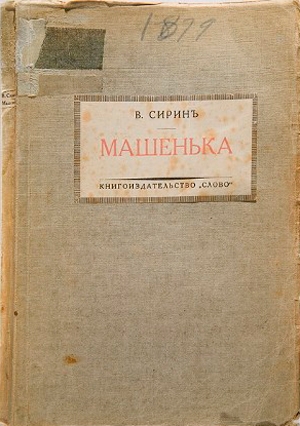 His first Russian literary publications, signed with pseudonym Syrin (the name of the mythological paradise bird), were printed by emigrant press (“Mashenka”, “The Defence”). Some short stories and lyrical poems where he depicted the drama and tragedy of the Russian refugees, the downfall of their first hopes and their despair (an emigrant chess-player Luzhin in “The Defence” committed a suicide by jumping out of the window) were accepted with understanding by readers. One of them was Ivan Bunin, the Noble Prize winner for literature and one of Nabokov’s authorities of that time.
His first Russian literary publications, signed with pseudonym Syrin (the name of the mythological paradise bird), were printed by emigrant press (“Mashenka”, “The Defence”). Some short stories and lyrical poems where he depicted the drama and tragedy of the Russian refugees, the downfall of their first hopes and their despair (an emigrant chess-player Luzhin in “The Defence” committed a suicide by jumping out of the window) were accepted with understanding by readers. One of them was Ivan Bunin, the Noble Prize winner for literature and one of Nabokov’s authorities of that time.
However, the young writer was far from following standards of the old realistic school. He was too complicated and ambitious for such a primitive task. Being a contemporary of the proletariat revolution and the bloody communist dictatorship, he hated any kind of primitivism and philistinism.
The next novels – “The Despair”, “The Lantern in the Dark” and “The Invitation to Beheading”, written in an anti-realistic, hard-modernist language, sometimes close to Kafkian absurdity, expressed not only his own existential cry but also a programmatic challenge to the cruelty of the communist dictatorship.
Dostoevsky noticed once that all Russian Literature went out of Gogol’s “Overcoat”. I should say that Nabokov came out of Gogol’s “Nose”. And when he stood up, everybody could see “The Diaries of a Madman” in his hands, opened on the last page.
During that time the best of Nabokov’s novels was born. It was “The Gift”. It is very specific. There is no ordinary plot in the book. Formally, it is a life and carrier story of a Russian writer Godunov-Cherdyntsev and his love Zina Mortz. But the real heroine of the novel is not Zina. It is the Russian Literature. Modernist Language and the structure of “The Gift” which let Nabokov show the lustre and the darkness of our cultural heritage: from Pushkin to “the five poets” with names, beginning with “B”: Balmont, Bunin, Beliy, Blok and Bulgakov – the five senses of the new Russian poetry.
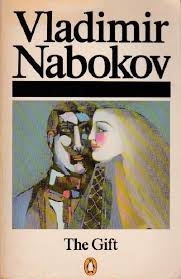 “The Gift” ’s author doesn’t say many words about his favorite writers in a direct way. You just see their reflections or allusions to their aesthetics, feel their invisible breathing. At the same time he dedicates the whole chapter 4 to the biography of Nikolai Chernyshevskiy, a famous revolutionary-populist (narodnik) and a spiritual father in the person of Lenin that becomes the negative center of the novel. Nabokov follows the example of Dostoevskiy’s “Demons” and gives a caricature portrait of the revolutionary, but he makes it in a different manner. Not to be boring, Nabokov retells the Cherdyntsev’s utilitarian and socially limited ideas in the black ironic verse.
“The Gift” ’s author doesn’t say many words about his favorite writers in a direct way. You just see their reflections or allusions to their aesthetics, feel their invisible breathing. At the same time he dedicates the whole chapter 4 to the biography of Nikolai Chernyshevskiy, a famous revolutionary-populist (narodnik) and a spiritual father in the person of Lenin that becomes the negative center of the novel. Nabokov follows the example of Dostoevskiy’s “Demons” and gives a caricature portrait of the revolutionary, but he makes it in a different manner. Not to be boring, Nabokov retells the Cherdyntsev’s utilitarian and socially limited ideas in the black ironic verse.
“…No great intelligence is needed to distinguish a connection between the teaching materialism, regarding inborn tendency to good; equality of man’s capacities – capacities that generally are termed mental; the great influence exterior circumstances have on a man; omnipotent of experience; sway of habit and upbringing; the extreme importance of industry; the moral right to pleasure and communism”.
In opposition to this blind social reductionism, Nabokov puts a pure aesthetic contemplation of the life mystery which we find in Godunov-Cherdyntsev’s poems:
One night between sunset and river
On the old bridge we stood, you and I,
“Will you ever forget it”, I queried,
“That particular swift that went by?”
And you answered so earnestly: “Never!”
And what sobs made us suddenly shiver
What story life emitted in flight
Till we die, till tomorrow, for ever,
You and I on the old bridge one night.
To any kind of negativism and foolish optimism, especially political demagogy with its promising “social progress”, “happy future”, he sets off his clear anti-equalizing pessimistic credo: “An oak is a tree, a rose is a flower, a deer is an animal, a sparrow is a bird. Russia is our Fatherland, death is inevitable”.
“The Gift” was received with cold indifference by the immigrant community. The Orthodox people couldn’t accept Nabokov’s antichristian philosophy, the left wing – his anti-socialist and anti-populist views, the bourgeois (in the Flaubertian sense) couldn’t accept his unusual Avant-Guard language. And, of course, it was impossible even to dream about some Russian readers in his Fatherland. All Nabokov’s works were absolutely banned by the Soviet regime.
This kind of reaction was not unexpected by the author. He was proud of his forced solitude:
Thank you, my land for your remotest,
Most cruel mist my thanks are due.
By you possessed, by you unnoticed
Unto myself I speak of you.
“The Gift” was the best Vladimir Nabokov’s novel, written by him in the native language. It was the top of the whole Russian period of his creative work. When the conclusive chapter of the book was completed in 1937 in France, he and his family – his wife Vera and his son Dmitry – moved from Europe to USA. There Nabokov had to find a job to earn his living. In Germany he taught many language classes. He taught Russian literature at Weleshy College and then from 1948 till 1959 he lectured on Russian and European Literature at Cornell University. And all that time he never stopped writing fiction.
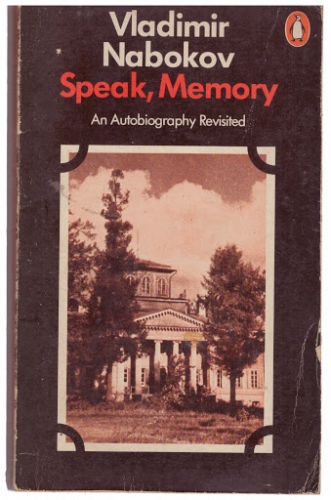 He finished the book of memories – its first title “Conclusive Evidence” (1951) – later changed into “Speak, Memory” by the author -, where he described in a pure classic manner his happy childhood in a family village Rozhdestveno near St. Petersburgh, portrayed with infinite tender his parents and represented the general life atmosphere of a good old pre-revolutionary Russia.
He finished the book of memories – its first title “Conclusive Evidence” (1951) – later changed into “Speak, Memory” by the author -, where he described in a pure classic manner his happy childhood in a family village Rozhdestveno near St. Petersburgh, portrayed with infinite tender his parents and represented the general life atmosphere of a good old pre-revolutionary Russia.
Very few people in America could appreciate that elegant nostalgic book. The next novels “The Real Life of Sebastian Knight» and «Bend Sinister” were easier and more understandable for a western reader but they were not noticed either. And Nabokov decided to create something totally different.
“Lolita, light of my life, fin of my loins. My sin, my soul, Lo-lee-ta: the tip of the tongue, taking a trip of three steps down the palate to tap, at thee, on the teeth. Lo-lee-ta!
She was Lo, plain Lo in the morning, standing from feet ten in one sock. She was Lola in slacks. She was Dolly at school. She was Dollores on the dotted line. But in my arms she was always Lolita”.
About 1955 he was writing the world famous, magic and sensational Lolita. It was a thrilling, intensely lyrical, sentimental story about the aging Humbert, Humbert’s doomed passion for a twelve-year-old nymphet, a sexually attractive young girl Dolores Haze.
“Wanted, wanted: Dolores Haze.
Hair: brown. Lips: scarlet.
Age: five thousand three hundred days.
Profession: None, or starlet”.
(…)
My car is limping, Dolores Haze,
And the last long lap is the hardest.
And I shall be dumped where the weed decays
And the rest of rust and stardust.
From the very beginning the book brought surprises to its author. Firstly, Nabokov could not find an editor in USA. When the novel was published by the “Olympic Press” in Paris, American critics fired a common volley at “Lolita”. One of them said that the author of the novel was “hypercivilized European debanching young American”, another classified the story as “pornographical”, the third called the book “anti-American” and the forth called it “anti-semitic”.
Humbert was at least three times mistaken for a Jew, and the pistol of his rival Guilty was a German one.
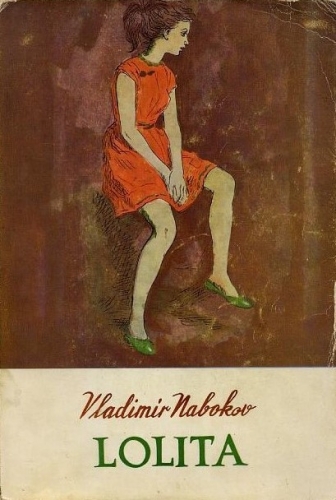 Nabokov tried to defend himself. He said that “Lolita” couldn’t be considered as anti-American. While composing the story, he tried to be an American writer. What one should bear in mind he was not a realistic author, he wrote fiction. It had taken Nabokov some forty years to invent Russia and Western Europe. And at that moment he faced the task of inventing America. He didn’t like Humbert Humbert. Indeed that character was not an American citizen, he was a foreigner and an anarchist. Nabokov disagreed with him in many ways, besides, nymphets like his, disagreed, for example, with Freid or Marx.
Nabokov tried to defend himself. He said that “Lolita” couldn’t be considered as anti-American. While composing the story, he tried to be an American writer. What one should bear in mind he was not a realistic author, he wrote fiction. It had taken Nabokov some forty years to invent Russia and Western Europe. And at that moment he faced the task of inventing America. He didn’t like Humbert Humbert. Indeed that character was not an American citizen, he was a foreigner and an anarchist. Nabokov disagreed with him in many ways, besides, nymphets like his, disagreed, for example, with Freid or Marx.
He was not understood and pled guilty. After an enormous scandal round “Lolita” Nabokov lost his job at Cornell University. After that final knock-out which in fact became the beginning of Nabokov’s world glory, the writer could devote all his time to the literary work. He published a poem “Pale Fire” of nine hundred ninety-nine lines, divided into four cantos with a long fantastic commentary, a novel “Pnin” about an emigrant university lecturer like him. Among other fiction, there was a novel “Ada or Azdor: a Family Chronicle”, some books and short stories, plays and a screen-play for his “Lolita”, ordered by Stanly Kubrik.
And let’s remember that Vladimir Nabokov was a brilliant translator and an expert in the world literature. The most important creation in this field was Pushkin’s “Eugen Onegyn”, published by Bollinger Foundation in four volumes with huge commentary in every one. He also made the English translation of “The Song of Igor’s Campaign”, a famous Medieval tale, Lermontov’s “Hero of our time” and some poems of the Russian classics. From English into Russian he retold “Alice’s Adventures in the Wonderland” by Luis Carrol (“Alisa v strane chudes”) and his memories (“Drugie Berega”).
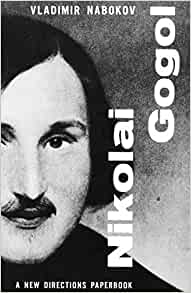 Nabokov’s critical biography by Nikolai Gogol (a non-Christian interpretation of a Christian author were the first books, published in the Soviet Union. But his “Lectures on Russian Literature”, “Lecture on Literature” (on Western Europe), “Strong Opinions” where he collected some interviews, letters and articles were unknown until post-soviet times.
Nabokov’s critical biography by Nikolai Gogol (a non-Christian interpretation of a Christian author were the first books, published in the Soviet Union. But his “Lectures on Russian Literature”, “Lecture on Literature” (on Western Europe), “Strong Opinions” where he collected some interviews, letters and articles were unknown until post-soviet times.
“Why?” – you can ask. May be, because of his not very Russian American novels? I don’t think so. Many American writers have been translated and published in the USSR. By the way, Nabokov himself was quite clear about his country orientations, especially after he came back to Europe (Swirzerland) in 1961. Many time Nabokov said that he loved many things in America, where he had found good friends and readers, but he was not going to become a citizen of USA. He and his wife Vera were travelling from motel to motel, hunting butterflies. He had never had a house of his own. In one of his interviews, he said that he felt Russian and thought that his Russian works were a kind of a tribute to his Fatherland, as well as the English books on the Russian Literature.
Of course he realized that after living for so many years abroad he couldn’t remain unchangeable. He had to change. And it was a difficult kind of switch. Sometimes he said that his private tragedy should not be anybody’s concern, and he had to abandon his national idiom, his untrammeled rich and infinitely docile Russian tongue for a second-rate brand of English.
Nabokov was banned in the Soviet Union exactly for this nostalgia, because it was an invincible, indocile, unconquered love for the old, noble White Russia. He hated Lenin’s terrorist regime and any kind of communism. He despised the clumsy, trivial and melodramatic Soviet literature. And the Soviet writers couldn’t forgive it to him. Those literary bureaucrats couldn’t excuse neither his genius, nor his devine language which was dangerous like sunshine for the night shadows.
Vladimir Nabokov is coming back home. His dreams became true. Hundreds of underground copies of his best Russian novels. Nabokov’s books are on sale in St. Petersburgh and Moscow. Luzhin, Godunov-Cherdyntsev, Pnin and others live souls moor to “Drugie Berega”
Speaking on his memories, I would like to cite the concluding lines:
“To my love I will not say “Good-bye”.
I will carry it with me for ever.
And remember, please, “Never say never”
Till we live, till we honestly die”.
Pavel Toulaev, Utica College, N.Y., 1994



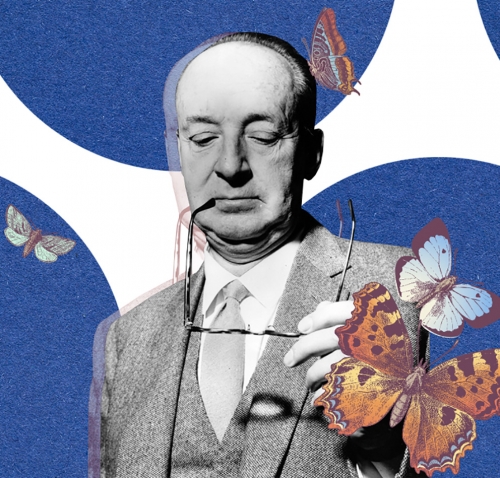

 del.icio.us
del.icio.us
 Digg
Digg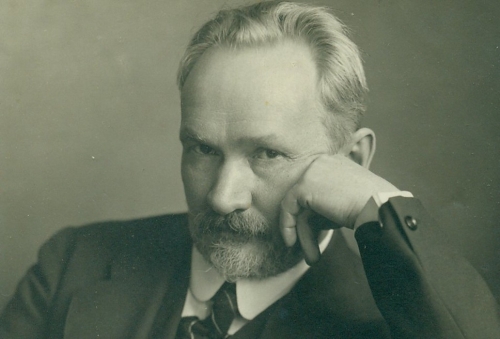
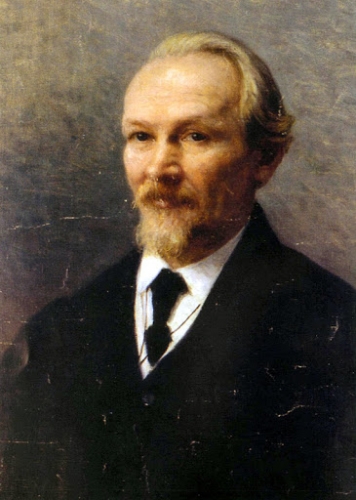
 Rozanov développe sa pensée religieuse : elle n’est pas directement centrée sur l’Eglise orthodoxe, qu’il n’abandonnera toutefois jamais, car, malgré ses lacunes et ses travers, elle réserve pour ses fidèles un espace de chaleur inégalée : on y enterre ses parents, ses proches, on y marie ses enfants. Le corps de l’Eglise, ce sont ses rites qui rythment la vie, celle du foyer, du nid. D’emblée, on le voit, la critique antireligieuse de Rozanov n’est pas celle des positivistes et des libéraux, dont il perçoit les idées comme également pétrifiées ou en voie de pétrification. Le noyau central de sa critique de l’orthodoxie russe est vitaliste. La doctrine chrétienne est hostile à la vie, au désir. Elle s’est détachée de l’« arbre de la vie », alors que l’Ancien Testament, qu’il revalorise, y était étroitement attaché. L’Evangile, qui, pour lui est un poison mais non au sens où l’entendait Maurras, véhicule une profonde tristesse, un deuil permanent. Il n’est pas tellurique, encore moins phallique. Il méconnait le rire et l’amour charnel, seul amour véritable. Mais fidèle à sa manière de dire aussi, et dans la foulée même de ses écrits provocateurs, le contraire de ce qu’il vient d’affirmer, Rozanov chante les vertus du monachisme européen, générateur d’un être hermaphrodite et monacal, qui est parvenu à sublimer à l’extrême les instincts vitaux et, par là même, à générer la civilisation en Europe. Ce monachisme créateur a toutefois cédé le pas à l’infertilité évangélique en Europe, si bien qu’à terme tout deviendra « ombre ». Ce n’eut pas été possible si la religion avait été plus charnelle, plus solaire, plus fidèle aux cultes antiques de la fertilité, dixit Rozanov, l’inclassable, car le soleil est là, est l’élément le plus patent du réel (sans double), sans lequel aucune vie, ni élémentaire ni monacale n’est possible, sans lequel les liturgies cycliques n’ont aucun sens. Comme David Herbert Lawrence, Rozanov réclame un retour de la religion au cosmos pour que la théologie ne soit plus un grouillement sec de radotages syllogistiques mais la voix du peuple paysan qui chante le retour du printemps.
Rozanov développe sa pensée religieuse : elle n’est pas directement centrée sur l’Eglise orthodoxe, qu’il n’abandonnera toutefois jamais, car, malgré ses lacunes et ses travers, elle réserve pour ses fidèles un espace de chaleur inégalée : on y enterre ses parents, ses proches, on y marie ses enfants. Le corps de l’Eglise, ce sont ses rites qui rythment la vie, celle du foyer, du nid. D’emblée, on le voit, la critique antireligieuse de Rozanov n’est pas celle des positivistes et des libéraux, dont il perçoit les idées comme également pétrifiées ou en voie de pétrification. Le noyau central de sa critique de l’orthodoxie russe est vitaliste. La doctrine chrétienne est hostile à la vie, au désir. Elle s’est détachée de l’« arbre de la vie », alors que l’Ancien Testament, qu’il revalorise, y était étroitement attaché. L’Evangile, qui, pour lui est un poison mais non au sens où l’entendait Maurras, véhicule une profonde tristesse, un deuil permanent. Il n’est pas tellurique, encore moins phallique. Il méconnait le rire et l’amour charnel, seul amour véritable. Mais fidèle à sa manière de dire aussi, et dans la foulée même de ses écrits provocateurs, le contraire de ce qu’il vient d’affirmer, Rozanov chante les vertus du monachisme européen, générateur d’un être hermaphrodite et monacal, qui est parvenu à sublimer à l’extrême les instincts vitaux et, par là même, à générer la civilisation en Europe. Ce monachisme créateur a toutefois cédé le pas à l’infertilité évangélique en Europe, si bien qu’à terme tout deviendra « ombre ». Ce n’eut pas été possible si la religion avait été plus charnelle, plus solaire, plus fidèle aux cultes antiques de la fertilité, dixit Rozanov, l’inclassable, car le soleil est là, est l’élément le plus patent du réel (sans double), sans lequel aucune vie, ni élémentaire ni monacale n’est possible, sans lequel les liturgies cycliques n’ont aucun sens. Comme David Herbert Lawrence, Rozanov réclame un retour de la religion au cosmos pour que la théologie ne soit plus un grouillement sec de radotages syllogistiques mais la voix du peuple paysan qui chante le retour du printemps.  La disparition du cadre doux du domostroï et l’a-cosmicité, l’anti-vitalisme, de la religion officielle sont les vecteurs du déclin final de la civilisation européenne. Sans vitalité naturelle, une civilisation n’a plus l’énergie d’agir ni la force de résister. Elle a perdu toute étincelle divine. Lev Gumilev, qui déplore la disparition des passions, Edouard Limonov, récemment décédé, qui parle d’un Occident devenu un « grand hospice », Alexandre Douguine, qui développe sa critique particulière de l’Occident, sont des échos lointains de ce vitalisme de Rozanov. Préfigurant également Heidegger, Rozanov déplore l’envahissement de nos foyers par l’opinion publique/médiatique, qui décentre nos attentions et disloque la cohérence de nos nids. Nous sommes dans un processus de « sociétarisation » qui détruit les communautés archaïques, dissout les ciments irrationnels et les remplace par un bla-bla intellectuel pseudo-rationnel. La politique est dès lors dominée par cet intellectualisme infécond et tout ce qu’elle produit comme idéologies ou comme programmes mérite le mépris. Rozanov formule donc un credo apolitique. Si la révolution bolchevique, survenue pendant la rédaction des Feuilles tombées, réussit à bouleverser de fond en comble l’édifice impérial tsariste, c’est parce qu’elle est portée par la vitalité des moujiks qui se sont engagés dans l’Armée Rouge. La révolution est une manifestation de la jeunesse, écrit-il, qui veut autre chose qu’un empire sclérosé.
La disparition du cadre doux du domostroï et l’a-cosmicité, l’anti-vitalisme, de la religion officielle sont les vecteurs du déclin final de la civilisation européenne. Sans vitalité naturelle, une civilisation n’a plus l’énergie d’agir ni la force de résister. Elle a perdu toute étincelle divine. Lev Gumilev, qui déplore la disparition des passions, Edouard Limonov, récemment décédé, qui parle d’un Occident devenu un « grand hospice », Alexandre Douguine, qui développe sa critique particulière de l’Occident, sont des échos lointains de ce vitalisme de Rozanov. Préfigurant également Heidegger, Rozanov déplore l’envahissement de nos foyers par l’opinion publique/médiatique, qui décentre nos attentions et disloque la cohérence de nos nids. Nous sommes dans un processus de « sociétarisation » qui détruit les communautés archaïques, dissout les ciments irrationnels et les remplace par un bla-bla intellectuel pseudo-rationnel. La politique est dès lors dominée par cet intellectualisme infécond et tout ce qu’elle produit comme idéologies ou comme programmes mérite le mépris. Rozanov formule donc un credo apolitique. Si la révolution bolchevique, survenue pendant la rédaction des Feuilles tombées, réussit à bouleverser de fond en comble l’édifice impérial tsariste, c’est parce qu’elle est portée par la vitalité des moujiks qui se sont engagés dans l’Armée Rouge. La révolution est une manifestation de la jeunesse, écrit-il, qui veut autre chose qu’un empire sclérosé. 
 Anna Calosso :
Anna Calosso : 
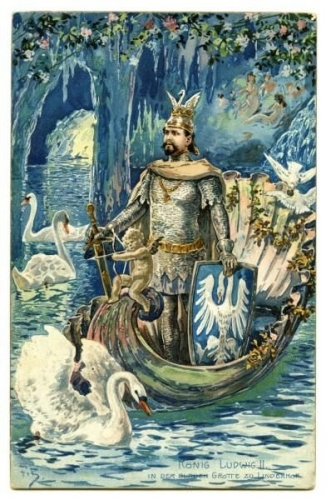 Anna Calosso :
Anna Calosso : 
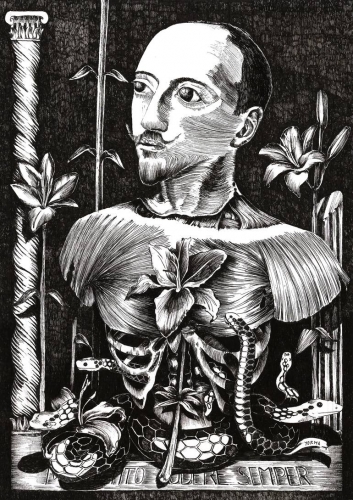
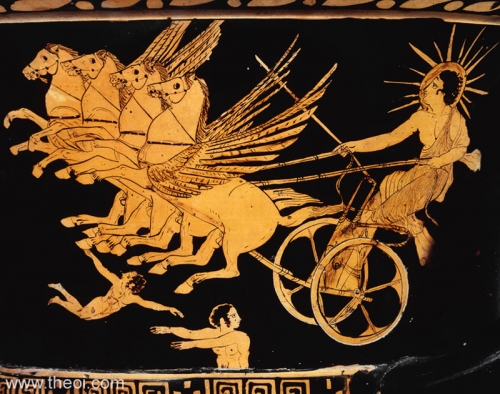
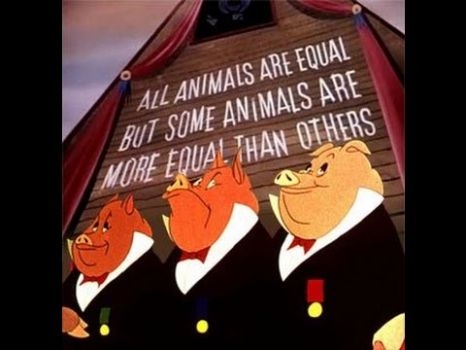
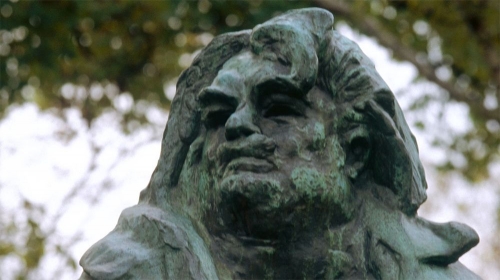
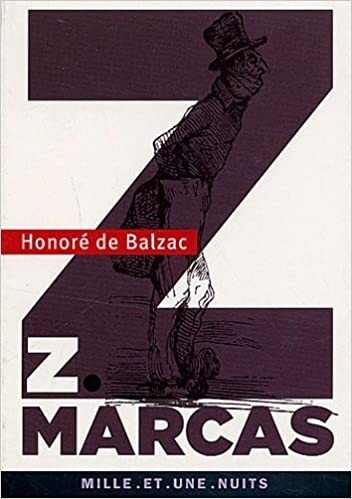 Extraits de Z. Marcas, petite nouvelle méconnue, prodigieuse. On commence par la chambre de bonne :
Extraits de Z. Marcas, petite nouvelle méconnue, prodigieuse. On commence par la chambre de bonne : Comme Stendhal, Chateaubriand et même Toussenel, Balzac sera un nostalgique de Charles X :
Comme Stendhal, Chateaubriand et même Toussenel, Balzac sera un nostalgique de Charles X :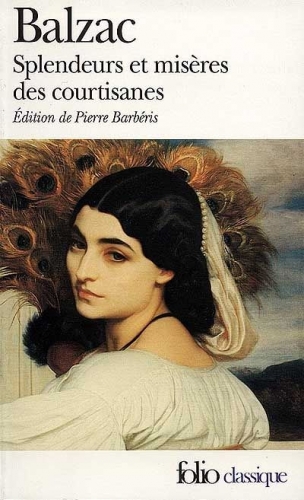 Il y a une vingtaine d’années j’avais rappelé à Philippe Muray que chez Hermann Broch comme chez Musil (génie juif plus connu mais moins passionnant) il y avait une dénonciation de la dimension carnavalesque dans l’écroulement austro-hongrois.
Il y a une vingtaine d’années j’avais rappelé à Philippe Muray que chez Hermann Broch comme chez Musil (génie juif plus connu mais moins passionnant) il y avait une dénonciation de la dimension carnavalesque dans l’écroulement austro-hongrois.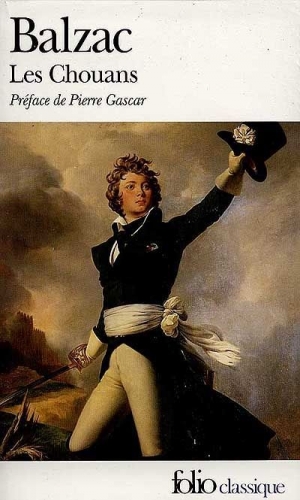 Puis Balzac explique l’homme moderne, électeur, citoyen, consommateur, politicard, et « ce que Marcas appelait les stratagèmes de la bêtise : on frappe sur un homme, il paraît convaincu, il hoche la tête, tout va s’arranger ; le lendemain, cette gomme élastique, un moment comprimée, a repris pendant la nuit sa consistance, elle s’est même gonflée, et tout est à recommencer ; vous retravaillez jusqu’à ce que vous ayez reconnu que vous n’avez pas affaire à un homme, mais à du mastic qui se sèche au soleil. »
Puis Balzac explique l’homme moderne, électeur, citoyen, consommateur, politicard, et « ce que Marcas appelait les stratagèmes de la bêtise : on frappe sur un homme, il paraît convaincu, il hoche la tête, tout va s’arranger ; le lendemain, cette gomme élastique, un moment comprimée, a repris pendant la nuit sa consistance, elle s’est même gonflée, et tout est à recommencer ; vous retravaillez jusqu’à ce que vous ayez reconnu que vous n’avez pas affaire à un homme, mais à du mastic qui se sèche au soleil. »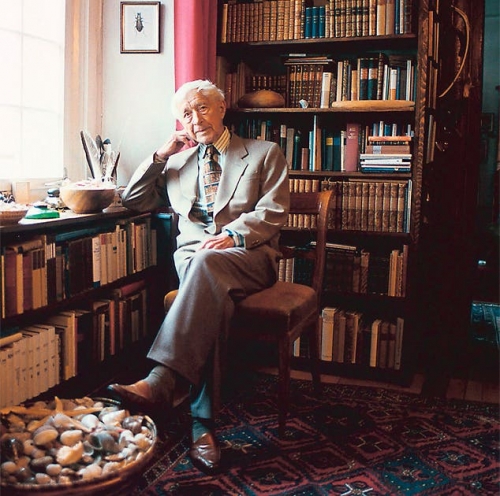

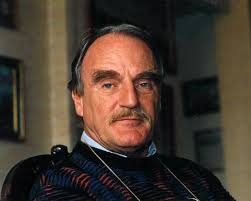

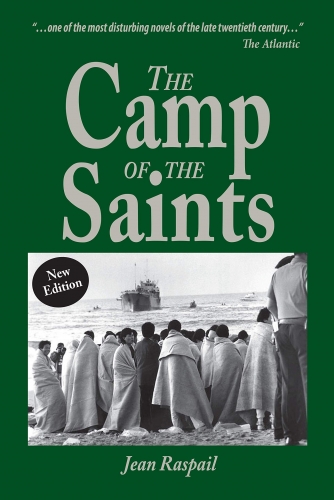
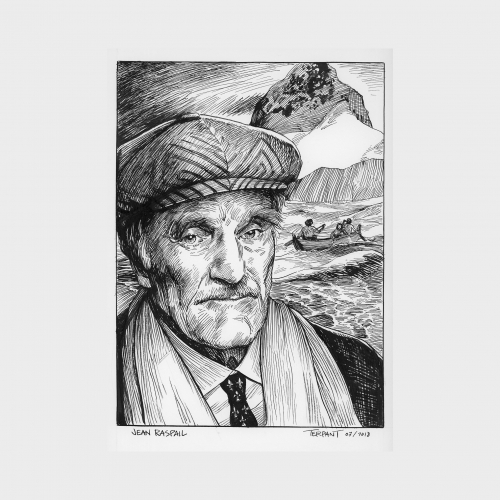
 Tout au long de ses périples, il s’attache au sort des derniers peuples de moins en moins préservés de la modernité. Dans Qui se souvient des Hommes… (Robert Laffont, 1986), il retrace d’une manière poignante la fin des Alacalufs. Avec son extraordinaire Journal peau-rouge (1975, réédition en 2011 chez Atelier Fol’Fer), il témoigne de la situation inégale des tribus amérindiennes parquées dans les réserves. Certaines s’y étiolent et aspirent seulement à la fin de l’histoire. D’autres, les Navajos par exemple, formulent, grâce à l’exploitation des ressources naturelles, de grandes ambitions comme devenir le cinquante et unième État des États-Unis. Jean Raspail se plaît à romancer ses explorations quasi-anthropologiques dans La Hache des Steppes (1974, réédition en 2016 chez Via Romana), dans Les Hussards (Robert Laffont, 1982) et dans Pêcheurs de Lune (Robert Laffont, 1990).
Tout au long de ses périples, il s’attache au sort des derniers peuples de moins en moins préservés de la modernité. Dans Qui se souvient des Hommes… (Robert Laffont, 1986), il retrace d’une manière poignante la fin des Alacalufs. Avec son extraordinaire Journal peau-rouge (1975, réédition en 2011 chez Atelier Fol’Fer), il témoigne de la situation inégale des tribus amérindiennes parquées dans les réserves. Certaines s’y étiolent et aspirent seulement à la fin de l’histoire. D’autres, les Navajos par exemple, formulent, grâce à l’exploitation des ressources naturelles, de grandes ambitions comme devenir le cinquante et unième État des États-Unis. Jean Raspail se plaît à romancer ses explorations quasi-anthropologiques dans La Hache des Steppes (1974, réédition en 2016 chez Via Romana), dans Les Hussards (Robert Laffont, 1982) et dans Pêcheurs de Lune (Robert Laffont, 1990).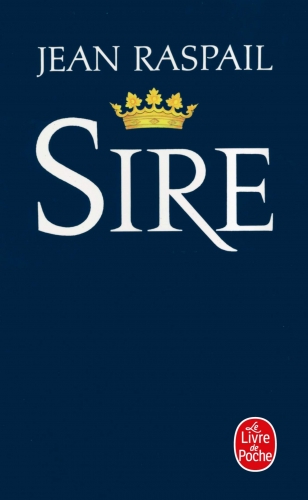 Toujours en avance sur son époque, Jean Raspail a compris que l’État républicain tue la France et son peuple au nom de valeurs mondialistes. La République parasite la France, lui vole toute sa vitalité et contribue au changement graduel et insidieux de la population. Il n’a jamais caché son royalisme sans toutefois se lier à un prince particulier. Sa conception de la restauration royale, plus métaphysique que politique d’ailleurs, exprimée dans Sire (Éditions de Fallois, 1991) se rapproche du providentialisme si ce n’est du Grand Monarque attendu. Il témoigne aussi de sa fidélité aux rois de France. Pour commémorer les deux cents ans de l’exécution du roi Louis XVI, il organise, le 21 janvier 1993 sur la place de la Concorde, une manifestation à laquelle participe l’ambassadeur des États-Unis en personne.
Toujours en avance sur son époque, Jean Raspail a compris que l’État républicain tue la France et son peuple au nom de valeurs mondialistes. La République parasite la France, lui vole toute sa vitalité et contribue au changement graduel et insidieux de la population. Il n’a jamais caché son royalisme sans toutefois se lier à un prince particulier. Sa conception de la restauration royale, plus métaphysique que politique d’ailleurs, exprimée dans Sire (Éditions de Fallois, 1991) se rapproche du providentialisme si ce n’est du Grand Monarque attendu. Il témoigne aussi de sa fidélité aux rois de France. Pour commémorer les deux cents ans de l’exécution du roi Louis XVI, il organise, le 21 janvier 1993 sur la place de la Concorde, une manifestation à laquelle participe l’ambassadeur des États-Unis en personne.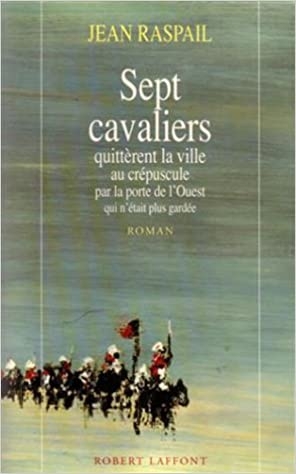 Son œuvre serait maintenant difficile à publier tant elle dérange. Elle propose une solution : l’existence d’isolats humains. Dans La Hache des Steppes, le narrateur s’échine à retrouver les lointains descendants des Huns dans le village d’Origny-le-Sec dans l’Aube. Il raconte plusieurs fois l’histoire de ces déserteurs sous Napoléon Ier qui se réfugient dans des villages russes reculés où ils font souche. Dans « Big Other », Jean Raspail annonce qu’« il subsistera ce que l’on appelle en ethnologie des isolats, de puissantes minorités, peut-être une vingtaine de millions de Français – et pas nécessairement de race blanche – qui parleront encore notre langue dans son intégrité à peu près sauvée et s’obstineront à rester conscients de notre culture et de notre histoire telles qu’elles nous ont été transmises de génération en génération (p. 37) ». L’exemple de certaines réserves peaux-rouges résilientes est à méditer…
Son œuvre serait maintenant difficile à publier tant elle dérange. Elle propose une solution : l’existence d’isolats humains. Dans La Hache des Steppes, le narrateur s’échine à retrouver les lointains descendants des Huns dans le village d’Origny-le-Sec dans l’Aube. Il raconte plusieurs fois l’histoire de ces déserteurs sous Napoléon Ier qui se réfugient dans des villages russes reculés où ils font souche. Dans « Big Other », Jean Raspail annonce qu’« il subsistera ce que l’on appelle en ethnologie des isolats, de puissantes minorités, peut-être une vingtaine de millions de Français – et pas nécessairement de race blanche – qui parleront encore notre langue dans son intégrité à peu près sauvée et s’obstineront à rester conscients de notre culture et de notre histoire telles qu’elles nous ont été transmises de génération en génération (p. 37) ». L’exemple de certaines réserves peaux-rouges résilientes est à méditer…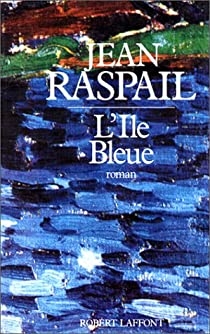 À la notable différence d’un histrion de gauche (pléonasme !) et d’un éditorialiste sentencieux mauvais observateur patenté de l’actualité, Jean Raspail ne bénéficiera pas d’une couverture médiatique digne de son œuvre. Il n’aura pas droit à des obsèques dans la cour d’honneur des Invalides. Qu’importe si en hussard de la flotte australe, il passe à l’ère d’un monde froid, triste et si moderne pour une sentinelle postée en arrière-garde. Ses lecteurs savent pourtant que l’auteur du Roi au-delà de la mer (Albin Michel, 2000) appartient aux éclaireurs, à l’avant-garde d’une élite reconquérante, d’une élite qui applique la devise de cette famille hautement européenne de devoir, d’honneur et de courage, les Pikkendorff : « Je suis d’abord mes propres pas. » Jean Raspail l’a toujours fait sienne, du Cap Horn au Septentrion, de l’Ouest américain à L’île bleue (Robert Laffont, 1988).
À la notable différence d’un histrion de gauche (pléonasme !) et d’un éditorialiste sentencieux mauvais observateur patenté de l’actualité, Jean Raspail ne bénéficiera pas d’une couverture médiatique digne de son œuvre. Il n’aura pas droit à des obsèques dans la cour d’honneur des Invalides. Qu’importe si en hussard de la flotte australe, il passe à l’ère d’un monde froid, triste et si moderne pour une sentinelle postée en arrière-garde. Ses lecteurs savent pourtant que l’auteur du Roi au-delà de la mer (Albin Michel, 2000) appartient aux éclaireurs, à l’avant-garde d’une élite reconquérante, d’une élite qui applique la devise de cette famille hautement européenne de devoir, d’honneur et de courage, les Pikkendorff : « Je suis d’abord mes propres pas. » Jean Raspail l’a toujours fait sienne, du Cap Horn au Septentrion, de l’Ouest américain à L’île bleue (Robert Laffont, 1988).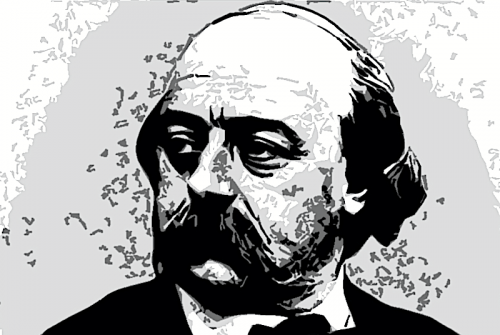
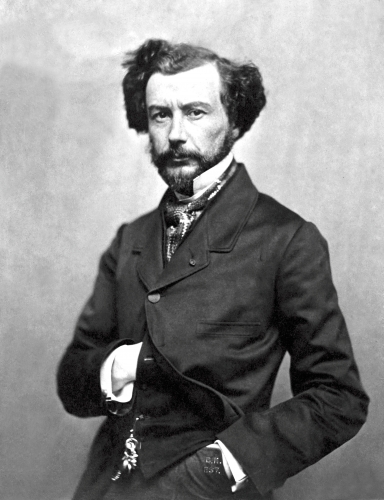

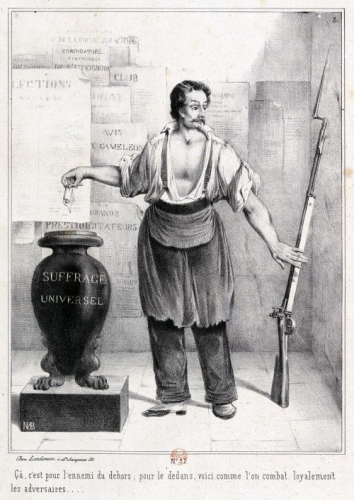
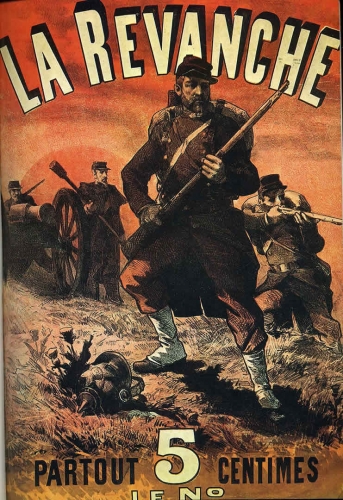
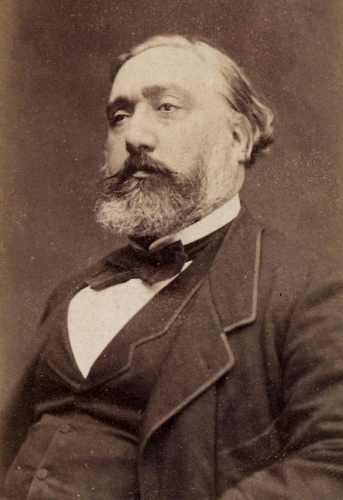
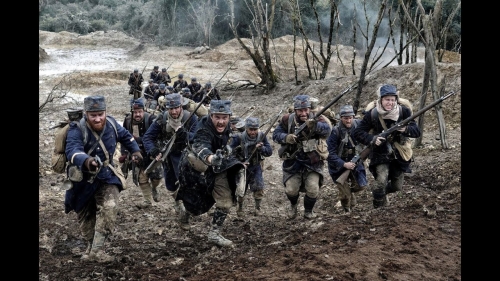
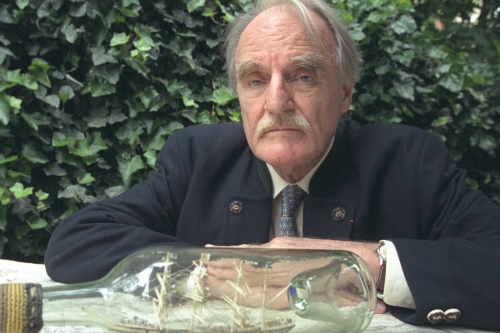
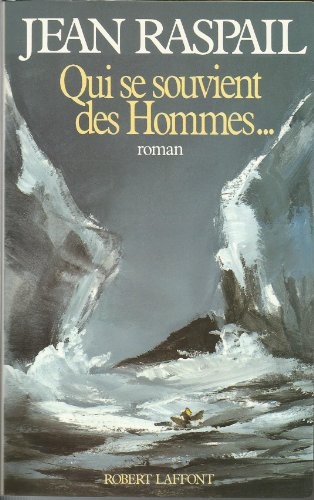 Qui se souvient des Hommes ? était le titre de ce « roman » consacré aux Alakalufs. Ce livre aurait pu être présenté comme une « épopée » ou une « tragédie » humaine, recréant le destin de ces êtres, nos frères, que les hommes qui les virent hésitèrent à reconnaître comme des Hommes.
Qui se souvient des Hommes ? était le titre de ce « roman » consacré aux Alakalufs. Ce livre aurait pu être présenté comme une « épopée » ou une « tragédie » humaine, recréant le destin de ces êtres, nos frères, que les hommes qui les virent hésitèrent à reconnaître comme des Hommes.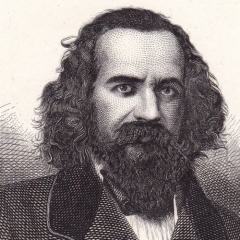 Déjà, en 1981, Jean Raspail avait publié Moi, Antoine de Tounens, roi de Patagonie ou le destin vécu d’un aventurier français qui débarqua en Argentine en 1860 et se fit proclamer roi d’Araucanie et de Patagonie par les populations indigènes locales. Ce livre avait obtenu le prix du roman de l’Académie française. Cet ouvrage relate l’histoire d’un aventurier venu du « Périgord vert » qui s’autoproclame roi, le 18 novembre 1860, par les tribus de cavaliers qui menaient contre l’Argentine et le Chili les derniers combats de la liberté et de l’identité. Il régna quelques mois, sous le nom d’Orllie-Antoine Ier (écrit parfois Orélie-Antoine Ier) galopant à leur tête en uniforme chamarré, sous les plis de son drapeau bleu, blanc, vert. Et puis, la chance l’abandonna. Trahi, jeté en prison, jugé, il parvint à regagner la France où un autre destin l’attendait, celui d’un roi de dérision en butte à tous les sarcasmes, mais jamais il ne céda. En effet, bien que le royaume n’existât plus, il créa autour de lui une petite cour, attribuant ainsi décorations et titres. Roi il resta, mais solitaire et abandonné, il mourut dans la misère le 17 septembre 1878, à Tourtoirac, en Dordogne, où il était né.
Déjà, en 1981, Jean Raspail avait publié Moi, Antoine de Tounens, roi de Patagonie ou le destin vécu d’un aventurier français qui débarqua en Argentine en 1860 et se fit proclamer roi d’Araucanie et de Patagonie par les populations indigènes locales. Ce livre avait obtenu le prix du roman de l’Académie française. Cet ouvrage relate l’histoire d’un aventurier venu du « Périgord vert » qui s’autoproclame roi, le 18 novembre 1860, par les tribus de cavaliers qui menaient contre l’Argentine et le Chili les derniers combats de la liberté et de l’identité. Il régna quelques mois, sous le nom d’Orllie-Antoine Ier (écrit parfois Orélie-Antoine Ier) galopant à leur tête en uniforme chamarré, sous les plis de son drapeau bleu, blanc, vert. Et puis, la chance l’abandonna. Trahi, jeté en prison, jugé, il parvint à regagner la France où un autre destin l’attendait, celui d’un roi de dérision en butte à tous les sarcasmes, mais jamais il ne céda. En effet, bien que le royaume n’existât plus, il créa autour de lui une petite cour, attribuant ainsi décorations et titres. Roi il resta, mais solitaire et abandonné, il mourut dans la misère le 17 septembre 1878, à Tourtoirac, en Dordogne, où il était né.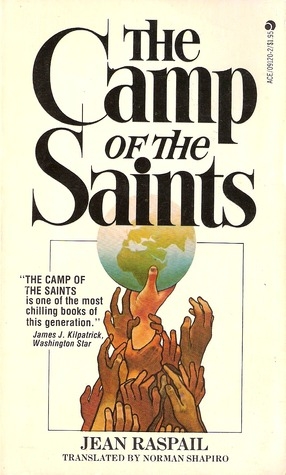
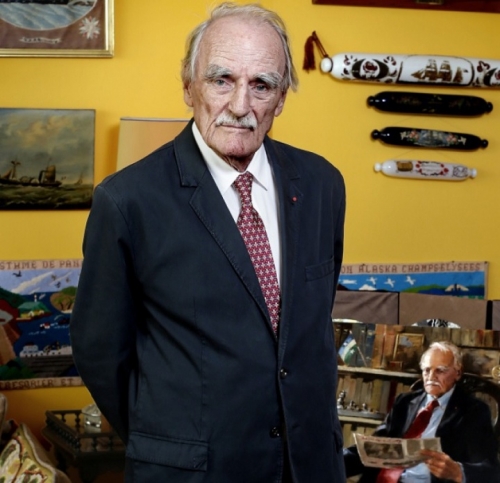
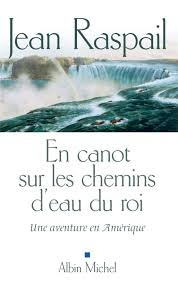 Ce goût, il l’avait pris dans sa jeunesse parisienne, quant il allait avec un petit camarade, certains après-midi, à la brasserie La Coupole, comme auditeur des réunions du club des explorateurs. Un vieux Monsieur ouvrait la séance avec la formule:
Ce goût, il l’avait pris dans sa jeunesse parisienne, quant il allait avec un petit camarade, certains après-midi, à la brasserie La Coupole, comme auditeur des réunions du club des explorateurs. Un vieux Monsieur ouvrait la séance avec la formule: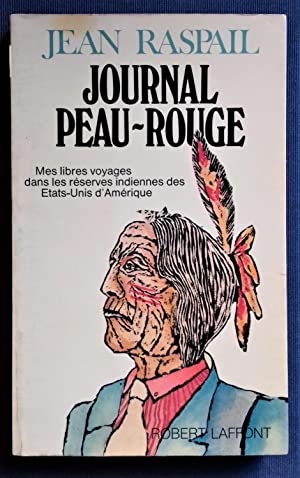 Encore quelques livres de voyage, dont un grand : » les peaux-rouges aujourd’hui » en 1975. Puis c’est sa grande période de romancier, je suis un auteur tardif disait-il, pendant que ses chers peaux-rouges se révoltent à Wounded-knee, il sort ici « le jeu du roi », formidable ouvrage, tout Raspail est là, le livre s’ouvre sur une citation de Roger Caillois: « le rêve est un facteur de légitimité », les beaux livres s’enchaîneront ensuite , sept cavaliers (que j’ai adapté en BD) Moi Antoine de Tounens, où voit le jour la Patagonie littéraire, terre mythique refuge de ses lecteurs, dont il était le consul général. L’île bleu, adapté (mal) par Nadine Trintignant pour la télévision, livre directement issu de l’aventure à vélo dans la débâcle. Sire, Les Pikkendorff, famille fictive qui hante ses livres. Le plus beau pour moi : « Qui se souvient des hommes » prix du livre inter, il élève aux Alakaluffs de la terre de feu, anéantis depuis longtemps, un monument de papier. Un joli livre que je recommande pour sa partie explorateur : pêcheurs de lune. Un retour en Patagonie, avec le dernier voyage: « Adios Terra del fuego » il sait que l’âge est là, et qu’il n’y reviendra plus.
Encore quelques livres de voyage, dont un grand : » les peaux-rouges aujourd’hui » en 1975. Puis c’est sa grande période de romancier, je suis un auteur tardif disait-il, pendant que ses chers peaux-rouges se révoltent à Wounded-knee, il sort ici « le jeu du roi », formidable ouvrage, tout Raspail est là, le livre s’ouvre sur une citation de Roger Caillois: « le rêve est un facteur de légitimité », les beaux livres s’enchaîneront ensuite , sept cavaliers (que j’ai adapté en BD) Moi Antoine de Tounens, où voit le jour la Patagonie littéraire, terre mythique refuge de ses lecteurs, dont il était le consul général. L’île bleu, adapté (mal) par Nadine Trintignant pour la télévision, livre directement issu de l’aventure à vélo dans la débâcle. Sire, Les Pikkendorff, famille fictive qui hante ses livres. Le plus beau pour moi : « Qui se souvient des hommes » prix du livre inter, il élève aux Alakaluffs de la terre de feu, anéantis depuis longtemps, un monument de papier. Un joli livre que je recommande pour sa partie explorateur : pêcheurs de lune. Un retour en Patagonie, avec le dernier voyage: « Adios Terra del fuego » il sait que l’âge est là, et qu’il n’y reviendra plus.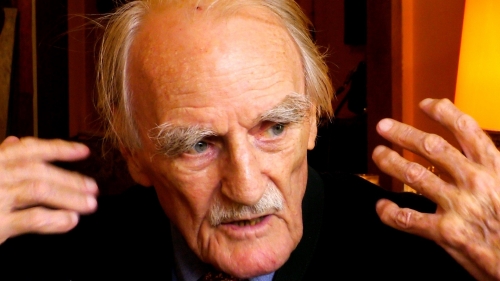
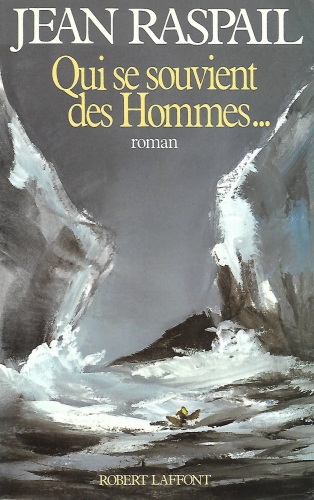 Disons un mot de sa vie.
Disons un mot de sa vie. Raspail est un écologiste avant l’heure. Pour défendre les Royaumes « au-delà des mers », en 1981, alors que la France passe d’un socialisme larvé à un socialisme revendiqué, il se proclame Consul Général de Patagonie, ultime représentant du royaume d’Orélie-Antoine 1er.
Raspail est un écologiste avant l’heure. Pour défendre les Royaumes « au-delà des mers », en 1981, alors que la France passe d’un socialisme larvé à un socialisme revendiqué, il se proclame Consul Général de Patagonie, ultime représentant du royaume d’Orélie-Antoine 1er.
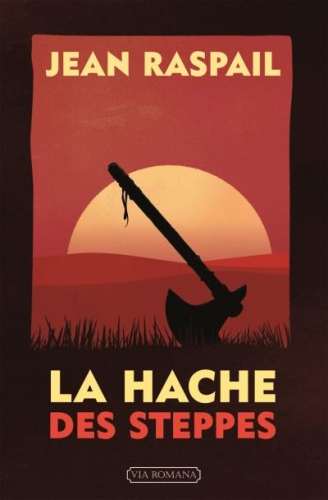 Cette faim,
Cette faim, 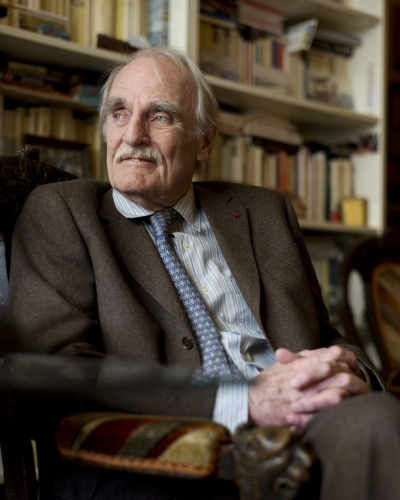
 J’avais laissé la Patagonie. Je devais me rendre au nord, remontant le long fil de cuivre chilien. La route longiligne s’ornait de merveilleux observatoires, de brumes côtières, de déserts mystérieux jonchés des songes de voyageur. Je me sentais plus fort. Il y a comme cela des voyages qui vous révèlent ce que vous cherchez. Nous voulions le Tibet, et ce furent les Andes. Andes chrétiennes et hispaniques ou je dansai comme l’Inca la danse en l’honneur du ciel et de la vierge. J’arrivai à San Pedro d’Atacama, Mecque andine du tourisme local. Village en adobe, argile cuite sous le soleil, entouré de salars(2) de la peur, de déserts et de geysers. Une vieille église en bois de cactus, une longue messe guerrière où le bon prêtre dénonce la main noire qui contrôle son pays et qui, voilà trois ans, brûla sept statues pieuses.
J’avais laissé la Patagonie. Je devais me rendre au nord, remontant le long fil de cuivre chilien. La route longiligne s’ornait de merveilleux observatoires, de brumes côtières, de déserts mystérieux jonchés des songes de voyageur. Je me sentais plus fort. Il y a comme cela des voyages qui vous révèlent ce que vous cherchez. Nous voulions le Tibet, et ce furent les Andes. Andes chrétiennes et hispaniques ou je dansai comme l’Inca la danse en l’honneur du ciel et de la vierge. J’arrivai à San Pedro d’Atacama, Mecque andine du tourisme local. Village en adobe, argile cuite sous le soleil, entouré de salars(2) de la peur, de déserts et de geysers. Une vieille église en bois de cactus, une longue messe guerrière où le bon prêtre dénonce la main noire qui contrôle son pays et qui, voilà trois ans, brûla sept statues pieuses.




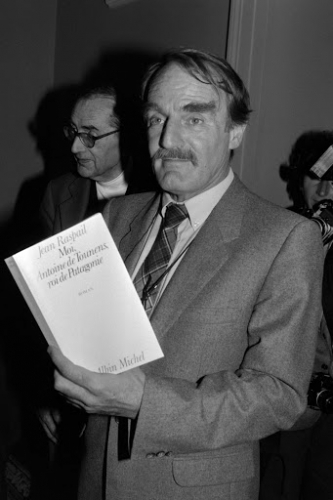
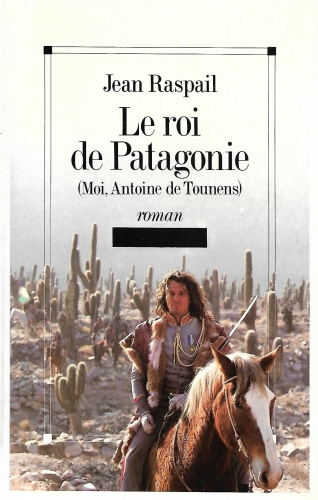

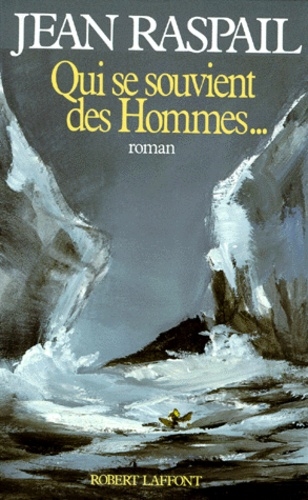 Il n’y aura pas, à l’enterrement de Jean Raspail, écrivain de marine, consul général du Royaume d’Araucanie et de Patagonie, de retransmission en direct, de larmes photogéniques, ni même d’hommage lyrique, écrit à la truelle pour un Président qui salit tout, même la grandeur. Ce qu’il y aura, outre les sujets fidèles et les soldats perdus, c’est le monde d’un romancier, romancier dont le travail est, disait son ami Volkoff, de faire « quelque chose de moins réel, mais de plus vrai ».
Il n’y aura pas, à l’enterrement de Jean Raspail, écrivain de marine, consul général du Royaume d’Araucanie et de Patagonie, de retransmission en direct, de larmes photogéniques, ni même d’hommage lyrique, écrit à la truelle pour un Président qui salit tout, même la grandeur. Ce qu’il y aura, outre les sujets fidèles et les soldats perdus, c’est le monde d’un romancier, romancier dont le travail est, disait son ami Volkoff, de faire « quelque chose de moins réel, mais de plus vrai ».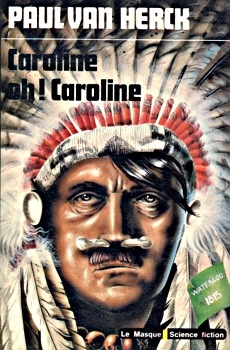
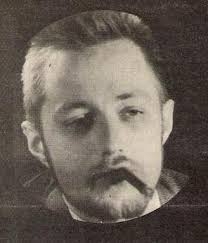 Outre sa couverture, Caroline Oh ! Caroline du Flamand Paul Van Herck (1938 – 1989) brave toutes les convenances historiques en proposant une satire déjantée proprement impubliable aujourd’hui. Inspiré à la fois par le style de Marcel Aymé et de la veine littéraire flamande souvent burlesque, Caroline Oh ! Caroline associe la farce, le fantastique, le psychadélisme et l’uchronie.
Outre sa couverture, Caroline Oh ! Caroline du Flamand Paul Van Herck (1938 – 1989) brave toutes les convenances historiques en proposant une satire déjantée proprement impubliable aujourd’hui. Inspiré à la fois par le style de Marcel Aymé et de la veine littéraire flamande souvent burlesque, Caroline Oh ! Caroline associe la farce, le fantastique, le psychadélisme et l’uchronie.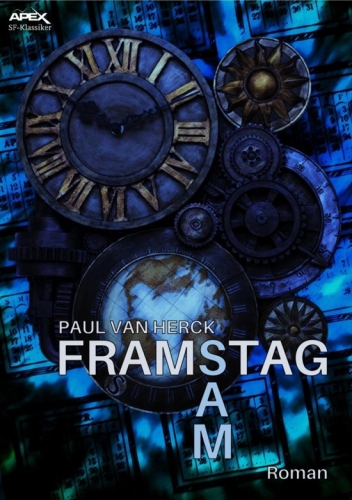 Dans le cadre de sa mission secrète qui nécessite de traverser l’Atlantique par les airs grâce à l’un des tout premiers avions, on adjoint à Bill un second d’origine germanophone, prénommé Adolf, grand fan de Richard Wagner. C’est un « homme à la drôle de petite moustache et aux cheveux gris coiffés à la limande. Son regard était à la fois pénétrant et étrange (p. 46) ». Bien que regrettant la victoire franco-américaine de Waterloo, Adolf est prêt à explorer les « riches gisements au Tex-Ha, ou chez le Caliphe Hornia (p. 53) ».
Dans le cadre de sa mission secrète qui nécessite de traverser l’Atlantique par les airs grâce à l’un des tout premiers avions, on adjoint à Bill un second d’origine germanophone, prénommé Adolf, grand fan de Richard Wagner. C’est un « homme à la drôle de petite moustache et aux cheveux gris coiffés à la limande. Son regard était à la fois pénétrant et étrange (p. 46) ». Bien que regrettant la victoire franco-américaine de Waterloo, Adolf est prêt à explorer les « riches gisements au Tex-Ha, ou chez le Caliphe Hornia (p. 53) ».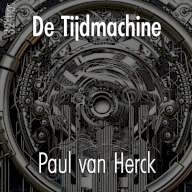 Dans ce monde rêvé par Houria Bouteldja, Rokhaya Diallo et Lilian Thuram, existent dorénavant « deux Europes, l’Europe Noire et l’Europe Rouge. Comme les Noirs venaient de l’ouest, et les Indiens de l’est, ce furent l’Europe occidentale et l’Europe orientale, sans aucune référence à la réalité géographique, car la ligne de démarcation avait de singulières sinuosités (p. 172) ». Les relations entre les deux ensembles victorieux se chargent de méfiance réciproque quand il n’est pas la proie d’attentats à répétition. L’un d’eux revient à Bill.
Dans ce monde rêvé par Houria Bouteldja, Rokhaya Diallo et Lilian Thuram, existent dorénavant « deux Europes, l’Europe Noire et l’Europe Rouge. Comme les Noirs venaient de l’ouest, et les Indiens de l’est, ce furent l’Europe occidentale et l’Europe orientale, sans aucune référence à la réalité géographique, car la ligne de démarcation avait de singulières sinuosités (p. 172) ». Les relations entre les deux ensembles victorieux se chargent de méfiance réciproque quand il n’est pas la proie d’attentats à répétition. L’un d’eux revient à Bill.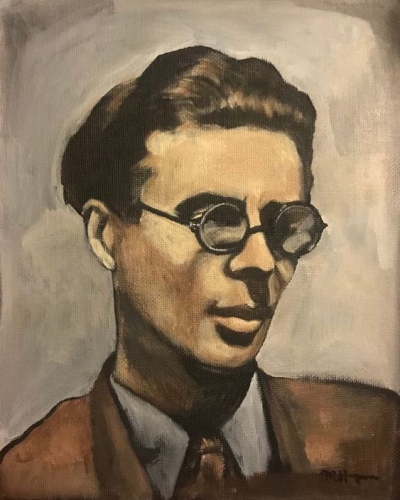
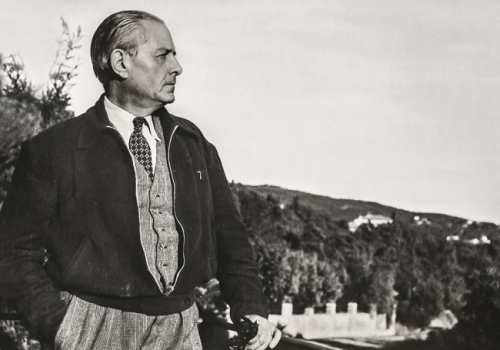
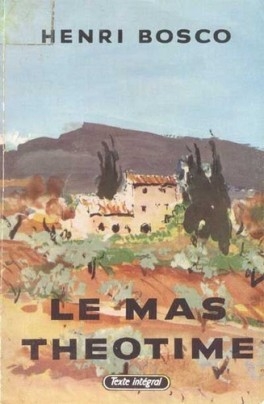 Toute œuvre romanesque qui ne se réduit pas à l’anecdote ou à de vaines complications psychologiques instaure un autre rapport au temps, s’inscrit dans une météorologie et une chronologie légendaires où l’homme cesse d’être à lui-même la seule réalité. Voici le ciel, la terre, et cette mémoire seconde, qui affleure, et qui porte les phrases ; voici cette rhétorique profonde, sur laquelle les phrases reposent comme sur une houle et vont porter jusqu’à nous, jusqu’aux rives de notre entendement, des mondes chiffrés, que notre intelligence déchiffre comme des énigmes, sans pour autant les expliquer. Ainsi les romans d’Henri Bosco nous laissent dans le suspens, dans une aporie, une attente, une attention extrêmes aux variations d’ombre et de lumière, aux états d’âme qui n’appartiennent pas seulement aux sentiments humains mais au monde lui-même, à ce Pays qui n’est pas seulement une réalité administrative ou départementale mais un don, une civilité, un commerce entre le visible et l’invisible, - le don d’une autre temporalité qui nous fait à jamais insolvables des bienfaits reçus.
Toute œuvre romanesque qui ne se réduit pas à l’anecdote ou à de vaines complications psychologiques instaure un autre rapport au temps, s’inscrit dans une météorologie et une chronologie légendaires où l’homme cesse d’être à lui-même la seule réalité. Voici le ciel, la terre, et cette mémoire seconde, qui affleure, et qui porte les phrases ; voici cette rhétorique profonde, sur laquelle les phrases reposent comme sur une houle et vont porter jusqu’à nous, jusqu’aux rives de notre entendement, des mondes chiffrés, que notre intelligence déchiffre comme des énigmes, sans pour autant les expliquer. Ainsi les romans d’Henri Bosco nous laissent dans le suspens, dans une aporie, une attente, une attention extrêmes aux variations d’ombre et de lumière, aux états d’âme qui n’appartiennent pas seulement aux sentiments humains mais au monde lui-même, à ce Pays qui n’est pas seulement une réalité administrative ou départementale mais un don, une civilité, un commerce entre le visible et l’invisible, - le don d’une autre temporalité qui nous fait à jamais insolvables des bienfaits reçus.  L’œuvre d’Henri Bosco est, comme toutes les grandes œuvres de notre littérature, une pensée en action, mais en accord avec l’étymologie même du mot pensée, qui évoque la juste pesée, ces rapports et ces proportions où la part de l’inconnu n’est pas moins grande que la part connue ; où la part de la nuit détient les secrets de la lumière provençale. Œuvre nocturne mais non point ténébreuse ou opaque, louange des nuits lumineuses, des ombres qui sauvegardent, du haut jour qui tient sa vérité comme le secret d’une plus haute clarté encore, l’œuvre d’Henri Bosco sauve les phénomènes de la représentation abstraite que nous nous en faisons, et nous sauve nous-mêmes de nos identités trop certaines qui nous enferment dans une humanité irreliée à l’ordre du monde, détachée de la sagesse profonde de la nuit foisonnante de toutes les choses vivantes qui tendent vers la lumière ou en reçoivent les éclats. « Je pus ainsi, écrit Henri Bosco, me replacer sans peine devant le décor intérieur où j’avais regardé ma propre nuit en train de descendre sur moi cependant qu’au-dessus de moi dans le ciel s’avançait la nuit sidérale ».
L’œuvre d’Henri Bosco est, comme toutes les grandes œuvres de notre littérature, une pensée en action, mais en accord avec l’étymologie même du mot pensée, qui évoque la juste pesée, ces rapports et ces proportions où la part de l’inconnu n’est pas moins grande que la part connue ; où la part de la nuit détient les secrets de la lumière provençale. Œuvre nocturne mais non point ténébreuse ou opaque, louange des nuits lumineuses, des ombres qui sauvegardent, du haut jour qui tient sa vérité comme le secret d’une plus haute clarté encore, l’œuvre d’Henri Bosco sauve les phénomènes de la représentation abstraite que nous nous en faisons, et nous sauve nous-mêmes de nos identités trop certaines qui nous enferment dans une humanité irreliée à l’ordre du monde, détachée de la sagesse profonde de la nuit foisonnante de toutes les choses vivantes qui tendent vers la lumière ou en reçoivent les éclats. « Je pus ainsi, écrit Henri Bosco, me replacer sans peine devant le décor intérieur où j’avais regardé ma propre nuit en train de descendre sur moi cependant qu’au-dessus de moi dans le ciel s’avançait la nuit sidérale ».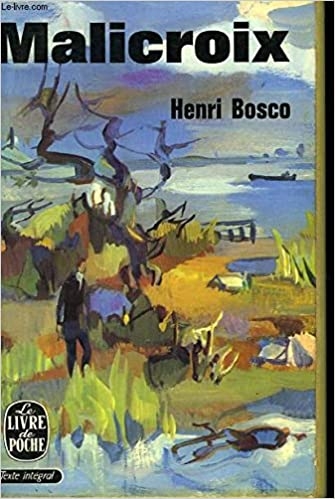 Rien de muséologique dans ce Pays qui est une réalité antérieure autant qu’un « vœu de l’esprit », selon la formule de René Char. Rien qui soit de l’ordre d’une représentation, d’une identité recluse sur elle-même, mais la pure et simple présence réelle qui ne s’éprouve que par la brusque flambée portée dans la rumeur du vent et dans l’amitié qui nous unit au monde, dans ces affinités dont nous sommes les élus bien plus que nous ne les choisissons. Ce qui nous est conté est un recours au cours de la tradition, de sa solennité légère, et non plus un discours ; une conversation et non pas une discussion, si bien que l’intelligence se laisse empreindre par les lieux qu’elle fréquente dans le temps infiniment recommencé de la promenade. C’est dans la connivence des éléments, de l’air, de l’eau, du feu et de la terre, en leurs inépuisables métamorphoses, que le temps se renouvelle et s’enchante au lieu de n’être que le signe de l’usure, d’une finalité malapprise, insultante au regard du libre cours qui conduit à elle.
Rien de muséologique dans ce Pays qui est une réalité antérieure autant qu’un « vœu de l’esprit », selon la formule de René Char. Rien qui soit de l’ordre d’une représentation, d’une identité recluse sur elle-même, mais la pure et simple présence réelle qui ne s’éprouve que par la brusque flambée portée dans la rumeur du vent et dans l’amitié qui nous unit au monde, dans ces affinités dont nous sommes les élus bien plus que nous ne les choisissons. Ce qui nous est conté est un recours au cours de la tradition, de sa solennité légère, et non plus un discours ; une conversation et non pas une discussion, si bien que l’intelligence se laisse empreindre par les lieux qu’elle fréquente dans le temps infiniment recommencé de la promenade. C’est dans la connivence des éléments, de l’air, de l’eau, du feu et de la terre, en leurs inépuisables métamorphoses, que le temps se renouvelle et s’enchante au lieu de n’être que le signe de l’usure, d’une finalité malapprise, insultante au regard du libre cours qui conduit à elle. 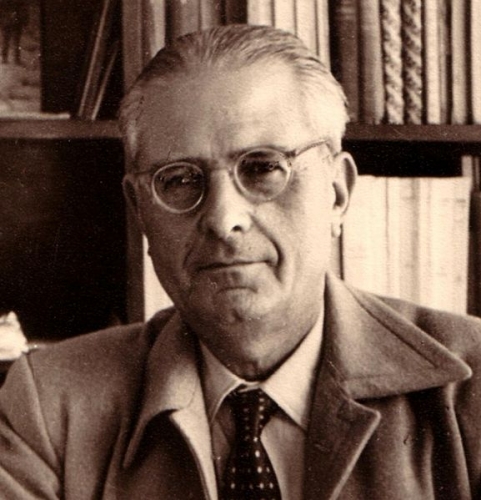
 Le temps qualifié, la géographie sacrée, les ressources secrètes des êtres et des choses singuliers, qui vont s’accordant avec les forces impersonnelles, ouvrent un espace, celui du roman, où le monde intérieur et le monde extérieur cessent d’être séparés par d’irréfragables frontières. Le soleil, le fleuve, les arbres, le vent, la nuit sont des présences sacrées car leur réalité symbolise avec une réalité plus haute, hors d’atteinte, que les phrases mélodieuses, selon la formule héraclitéenne, « voilent et dévoilent en même temps ». Entre le sensible et l’intelligible, entre la nuit profonde et l’éblouissante clarté, toutes les gradations s’emparent des songes, des effrois, des attentes ardentes des personnages devenus, par le génie romanesque, fabuleux instruments de perception des variations météorologiques. La vérité humaine est d’autant plus profonde et nuancée qu’elle est située, qu’elle cesse, par un suspens, de se référer exclusivement à elle-même. Les hommes ne sont humblement et souverainement présents que par ce partage de leur règne qu’ils consentent avec la terre et le ciel.
Le temps qualifié, la géographie sacrée, les ressources secrètes des êtres et des choses singuliers, qui vont s’accordant avec les forces impersonnelles, ouvrent un espace, celui du roman, où le monde intérieur et le monde extérieur cessent d’être séparés par d’irréfragables frontières. Le soleil, le fleuve, les arbres, le vent, la nuit sont des présences sacrées car leur réalité symbolise avec une réalité plus haute, hors d’atteinte, que les phrases mélodieuses, selon la formule héraclitéenne, « voilent et dévoilent en même temps ». Entre le sensible et l’intelligible, entre la nuit profonde et l’éblouissante clarté, toutes les gradations s’emparent des songes, des effrois, des attentes ardentes des personnages devenus, par le génie romanesque, fabuleux instruments de perception des variations météorologiques. La vérité humaine est d’autant plus profonde et nuancée qu’elle est située, qu’elle cesse, par un suspens, de se référer exclusivement à elle-même. Les hommes ne sont humblement et souverainement présents que par ce partage de leur règne qu’ils consentent avec la terre et le ciel. 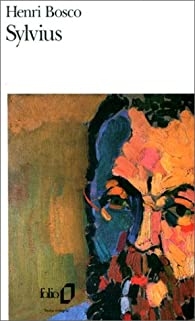 Contre la clarté monocorde, ennemie des ombres, Henri Bosco invoque non seulement le frémissement de l’eau, mais aussi le feu, là même où s’opère la coalescence de l’Eros et du Logos : « J’étais fasciné par le feu. Il pénétrait en moi, immobilisait mon cerveau sur une seule idée. Cette idée n’était qu’une braise… Terrible, mais si vive, si envahissante qu’elle ne soulevait aucune épouvante. J’étais devenu feu, corps de feu, cœur de feu, esprit-feu, et toute la forêt en flammes. Si l’incendie se fut propagé jusqu’à moi, je n’aurais pas fui, j’aurai attendu, embrassé le feu, et pris feu pour disparaître dans mon propre feu au milieu d’une gerbe d’étincelles. »
Contre la clarté monocorde, ennemie des ombres, Henri Bosco invoque non seulement le frémissement de l’eau, mais aussi le feu, là même où s’opère la coalescence de l’Eros et du Logos : « J’étais fasciné par le feu. Il pénétrait en moi, immobilisait mon cerveau sur une seule idée. Cette idée n’était qu’une braise… Terrible, mais si vive, si envahissante qu’elle ne soulevait aucune épouvante. J’étais devenu feu, corps de feu, cœur de feu, esprit-feu, et toute la forêt en flammes. Si l’incendie se fut propagé jusqu’à moi, je n’aurais pas fui, j’aurai attendu, embrassé le feu, et pris feu pour disparaître dans mon propre feu au milieu d’une gerbe d’étincelles. »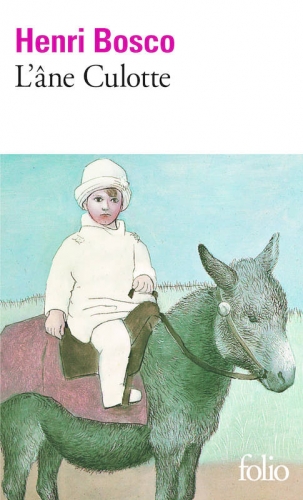 Tel est peut-être un des secrets le mieux gardés de la littérature française, de sa tant et si mal vantée « clarté classique », de n’être, en sa beauté ordonnatrice, qu’un surgeon d’intuitions plus profondes et plus sauvages, où l’art du sourcier, l’oniromancie, viennent irriguer la plénitude des formes du jour. Ce qui distingue l’art romanesque d’Henri Bosco, son poiein, sa pensée en action, n’est peut-être rien d’autre le sens des contiguïtés, et l’on pourrait presque dire de la consanguinité, du monde du rêve et du monde de la réalité. Ce qui unit les personnages et leurs ombres, qui parfois semblent leur échapper, n’est pas de l’ordre de la nécessité ou du déterminisme, disposé en discours, mais bien de celui d’une recouvrance. Si , comme dans l’œuvre de Gérard de Nerval, le songe et la réalité en sont pas séparés ce n’est point par artifice littéraire, mais parce que dans la vision et la pensée d’Henri Bosco, ils ne se distinguent qu’en se graduant. Le rêve est la réalité d’un autre rêve, et notre songe humain des songes du Pays reçoit ses messages. Nous ne commençons à habiter véritablement les lieux, c’est-à-dire que nous n’en devenons les hôtes que si hôtes à notre tour, nous recevons les légendes qui sont dans l’arbre des mots, comme l’envers argenté des feuilles.
Tel est peut-être un des secrets le mieux gardés de la littérature française, de sa tant et si mal vantée « clarté classique », de n’être, en sa beauté ordonnatrice, qu’un surgeon d’intuitions plus profondes et plus sauvages, où l’art du sourcier, l’oniromancie, viennent irriguer la plénitude des formes du jour. Ce qui distingue l’art romanesque d’Henri Bosco, son poiein, sa pensée en action, n’est peut-être rien d’autre le sens des contiguïtés, et l’on pourrait presque dire de la consanguinité, du monde du rêve et du monde de la réalité. Ce qui unit les personnages et leurs ombres, qui parfois semblent leur échapper, n’est pas de l’ordre de la nécessité ou du déterminisme, disposé en discours, mais bien de celui d’une recouvrance. Si , comme dans l’œuvre de Gérard de Nerval, le songe et la réalité en sont pas séparés ce n’est point par artifice littéraire, mais parce que dans la vision et la pensée d’Henri Bosco, ils ne se distinguent qu’en se graduant. Le rêve est la réalité d’un autre rêve, et notre songe humain des songes du Pays reçoit ses messages. Nous ne commençons à habiter véritablement les lieux, c’est-à-dire que nous n’en devenons les hôtes que si hôtes à notre tour, nous recevons les légendes qui sont dans l’arbre des mots, comme l’envers argenté des feuilles.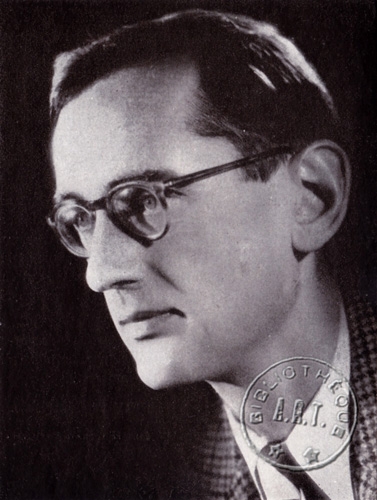
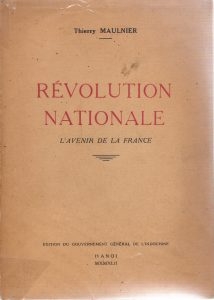 Thierry Maulnier, nom de plume de Jacques Louis André Talagrand (1909 – 1988), a rédigé de nombreux essais, écrit plusieurs pièces de théâtre et donné bien des préfaces. Sa bibliographie comporte cependant une omission de taille : l’absence de Révolution Nationale. L’avenir de la France. Cet ouvrage s’apparente à une sorte de fantôme dont diverses personnes ont nié son existence réelle.
Thierry Maulnier, nom de plume de Jacques Louis André Talagrand (1909 – 1988), a rédigé de nombreux essais, écrit plusieurs pièces de théâtre et donné bien des préfaces. Sa bibliographie comporte cependant une omission de taille : l’absence de Révolution Nationale. L’avenir de la France. Cet ouvrage s’apparente à une sorte de fantôme dont diverses personnes ont nié son existence réelle.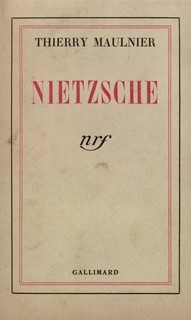 Cette hypothèse expliquerait la non reconnaissance de cette édition par Thierry Maulnier d’autant que la même année sort chez Lardanchet La France la guerre et la paix. Dans cet autre recueil, voulu celui-ci par Maulnier, se trouvent trois textes présents dans Révolution Nationale : « Guerre mondiale et Révolution nationale » à l’identique dans les deux ouvrages tandis que les premiers paragraphes de « Rester la France » et « La médiation française » ont été réécrits pour cette parution. Dès la fin de la Seconde Guerre mondiale, Thierry Maulnier publie chez Gallimard Violence et Conscience qui « a été écrit en 1942 et 1943 (p. 1) » et qui contient une version modifiée et enrichie à partir du deuxième paragraphe de « Révolution prolétarienne et réaction patriarcale ». En 1946, chez un jeune éditeur moins consensuel, La Table Ronde, paraît Arrière-pensées qui réunit des chroniques « écrites et publiées entre le printemps de 1941 et le printemps de 1944 (p. 5) ». Par rapport à Révolution Nationale, on relit souvent dans une version modifiée, voire changée, « Les poseurs de rails », « Avant l’assaut », « Erreurs de jeunesse », « L’assaut des médiocres », « Les “ intellectuels ” sont-ils responsables du désastre ? », « Un jugement sur Racine », « L’art et l’éducation », « Polémique d’ancien régime » et « L’esprit français est-il coupable ? » qui s’intitule dans Révolution Nationale « Controverses sur l’esprit français » (1). On suppose que les textes qui forment Révolution Nationale proviennent directement des périodiques. Dans le cas des recueils autorisés, Thierry Maulnier a retravaillé certains passages afin de les lier aux autres textes et d’en donner une cohérence interne évidente.
Cette hypothèse expliquerait la non reconnaissance de cette édition par Thierry Maulnier d’autant que la même année sort chez Lardanchet La France la guerre et la paix. Dans cet autre recueil, voulu celui-ci par Maulnier, se trouvent trois textes présents dans Révolution Nationale : « Guerre mondiale et Révolution nationale » à l’identique dans les deux ouvrages tandis que les premiers paragraphes de « Rester la France » et « La médiation française » ont été réécrits pour cette parution. Dès la fin de la Seconde Guerre mondiale, Thierry Maulnier publie chez Gallimard Violence et Conscience qui « a été écrit en 1942 et 1943 (p. 1) » et qui contient une version modifiée et enrichie à partir du deuxième paragraphe de « Révolution prolétarienne et réaction patriarcale ». En 1946, chez un jeune éditeur moins consensuel, La Table Ronde, paraît Arrière-pensées qui réunit des chroniques « écrites et publiées entre le printemps de 1941 et le printemps de 1944 (p. 5) ». Par rapport à Révolution Nationale, on relit souvent dans une version modifiée, voire changée, « Les poseurs de rails », « Avant l’assaut », « Erreurs de jeunesse », « L’assaut des médiocres », « Les “ intellectuels ” sont-ils responsables du désastre ? », « Un jugement sur Racine », « L’art et l’éducation », « Polémique d’ancien régime » et « L’esprit français est-il coupable ? » qui s’intitule dans Révolution Nationale « Controverses sur l’esprit français » (1). On suppose que les textes qui forment Révolution Nationale proviennent directement des périodiques. Dans le cas des recueils autorisés, Thierry Maulnier a retravaillé certains passages afin de les lier aux autres textes et d’en donner une cohérence interne évidente.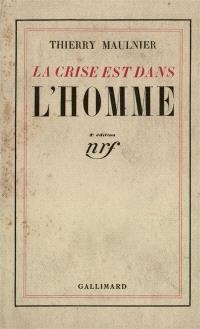 En outre, « le destin de la Révolution nationale, poursuit-il, est précisément de ne se laisser attirer ni par l’ancienne gauche, ni par l’ancienne droite : d’attirer au contraire en elle l’ancienne gauche et l’ancienne droite pour abolir en elles leurs stériles contradictions et pour les anéantir (p. 82) ». Voilà pourquoi « c’est dans la révolution nationale et dans la révolution nationale seule que la France peut aujourd’hui trouver les moyens de guérir ou plutôt de renaître, faire éclater la vigueur d’un génie qui survit intact à ses blessures, affirmer son droit à la vie (pp. 76 – 77) ». Il devient évident que « c’est sur nous et nous seuls que nous devons compter pour créer une civilisation où il nous soit possible de vivre (p. 55) ».
En outre, « le destin de la Révolution nationale, poursuit-il, est précisément de ne se laisser attirer ni par l’ancienne gauche, ni par l’ancienne droite : d’attirer au contraire en elle l’ancienne gauche et l’ancienne droite pour abolir en elles leurs stériles contradictions et pour les anéantir (p. 82) ». Voilà pourquoi « c’est dans la révolution nationale et dans la révolution nationale seule que la France peut aujourd’hui trouver les moyens de guérir ou plutôt de renaître, faire éclater la vigueur d’un génie qui survit intact à ses blessures, affirmer son droit à la vie (pp. 76 – 77) ». Il devient évident que « c’est sur nous et nous seuls que nous devons compter pour créer une civilisation où il nous soit possible de vivre (p. 55) ».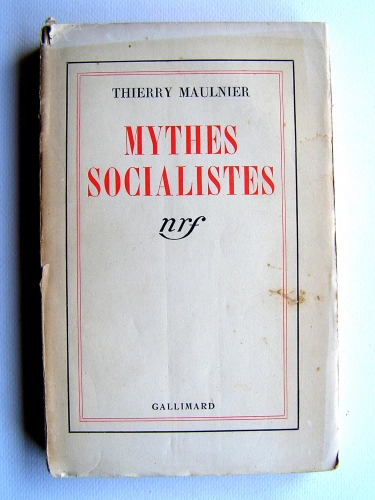 Thierry Maulnier conçoit la Révolution Nationale, on l’a vu, comme la matrice d’un nouvel ordre français. « Il faut créer de nouvelles mœurs, de nouvelles valeurs et de nouveaux modes de pensée (p. 71). » Comment ? Ce qu’il propose convient au fonctionnaire de la propagande à Hanoï qui a classé les textes à sa disposition. « refaire une nation, c’est d’abord se donner les moyens de la refaire. C’est d’abord occuper et réorganiser l’État (p. 22). » l’auteur s’intéresse aux interactions psychiques, sociales et politiques entre le « Chef », l’élite et le peuple. « La nature de l’autorité n’est pas seulement d’accroître la force ou pour mieux dire l’efficacité de ceux qui lui obéissent; elle est de métamorphoser cette force en une force de qualité supérieure (p. 204). » Cependant, « l’autorité elle-même, pour atteindre à toute sa vertu, a besoin à son tour de la collaboration de ceux sur qui elle s’exerce. Elle perd beaucoup de son efficacité, s’il ne lui est donné qu’une obéissance passive et comme inerte (p. 205) ». Cela signifie restaurer ce qui est à l’origine de la nation française : l’État. « C’est le pouvoir qui devait donc être rétabli ou refait avant toute chose : c’est l’ensemble des moyens d’exécution; c’est l’État. C’est par l’État que la reconstruction française à commencer (p. 23). »
Thierry Maulnier conçoit la Révolution Nationale, on l’a vu, comme la matrice d’un nouvel ordre français. « Il faut créer de nouvelles mœurs, de nouvelles valeurs et de nouveaux modes de pensée (p. 71). » Comment ? Ce qu’il propose convient au fonctionnaire de la propagande à Hanoï qui a classé les textes à sa disposition. « refaire une nation, c’est d’abord se donner les moyens de la refaire. C’est d’abord occuper et réorganiser l’État (p. 22). » l’auteur s’intéresse aux interactions psychiques, sociales et politiques entre le « Chef », l’élite et le peuple. « La nature de l’autorité n’est pas seulement d’accroître la force ou pour mieux dire l’efficacité de ceux qui lui obéissent; elle est de métamorphoser cette force en une force de qualité supérieure (p. 204). » Cependant, « l’autorité elle-même, pour atteindre à toute sa vertu, a besoin à son tour de la collaboration de ceux sur qui elle s’exerce. Elle perd beaucoup de son efficacité, s’il ne lui est donné qu’une obéissance passive et comme inerte (p. 205) ». Cela signifie restaurer ce qui est à l’origine de la nation française : l’État. « C’est le pouvoir qui devait donc être rétabli ou refait avant toute chose : c’est l’ensemble des moyens d’exécution; c’est l’État. C’est par l’État que la reconstruction française à commencer (p. 23). »
![La_face_de_Méduse_du_[...]Maulnier_Thierry_bpt6k3355720d.JPEG](http://euro-synergies.hautetfort.com/media/01/00/1643598651.JPEG) La Révolution Nationale doit de facto « dès maintenant nous préparer à une paix qui pourrait être pour nous, sin nous n’y prenons garde, plus redoutable que la guerre elle-même (p. 44) ». Il lui assigne donc une tâche ardue : fondre toutes les contradictions nationales dans un seul môle. En effet, « le drame du monde moderne vient de ce que les valeurs dont la composition merveilleuse et l’équilibre sans cesse en mouvement font une société harmonieuse ont commencé de se séparer les unes des autres, de s’exclure les unes les autres avec une fanatique intolérance, de s’amplifier jusqu’au mythe et d’exercer leur ravage anarchique en visant d’une vie monstrueusement indépendante (pp. 52 – 53) ». D’où cette mentalité française qui s’installe facilement dans la routine. « Si les Français se sont montrés inférieurs à d’autres peuples, au cours des cinquante dernières années, ce n’est pas dans la vitalité, ce n’est pas dans le jaillissement des sources créatrices, c’est dans l’organisation, l’utilisation, l’exploitation de leurs ressources. Ils n’ont pas été dépassés dans l’ordre de l’invention scientifique, mais dans celui des applications industrielles (p. 11) ». Il ne pointe pourtant pas la cause pratique de ces échecs répétés : une administration de plus en plus bureaucratique qui freine ou noie toute initiative originale afin de rester dans un moule normatif confortable. Il n’entend pas que la Révolution Nationale s’affadisse ou s’embourbe dans le marais des ministères incapables de se faire obéir de ses fonctionnaires.
La Révolution Nationale doit de facto « dès maintenant nous préparer à une paix qui pourrait être pour nous, sin nous n’y prenons garde, plus redoutable que la guerre elle-même (p. 44) ». Il lui assigne donc une tâche ardue : fondre toutes les contradictions nationales dans un seul môle. En effet, « le drame du monde moderne vient de ce que les valeurs dont la composition merveilleuse et l’équilibre sans cesse en mouvement font une société harmonieuse ont commencé de se séparer les unes des autres, de s’exclure les unes les autres avec une fanatique intolérance, de s’amplifier jusqu’au mythe et d’exercer leur ravage anarchique en visant d’une vie monstrueusement indépendante (pp. 52 – 53) ». D’où cette mentalité française qui s’installe facilement dans la routine. « Si les Français se sont montrés inférieurs à d’autres peuples, au cours des cinquante dernières années, ce n’est pas dans la vitalité, ce n’est pas dans le jaillissement des sources créatrices, c’est dans l’organisation, l’utilisation, l’exploitation de leurs ressources. Ils n’ont pas été dépassés dans l’ordre de l’invention scientifique, mais dans celui des applications industrielles (p. 11) ». Il ne pointe pourtant pas la cause pratique de ces échecs répétés : une administration de plus en plus bureaucratique qui freine ou noie toute initiative originale afin de rester dans un moule normatif confortable. Il n’entend pas que la Révolution Nationale s’affadisse ou s’embourbe dans le marais des ministères incapables de se faire obéir de ses fonctionnaires.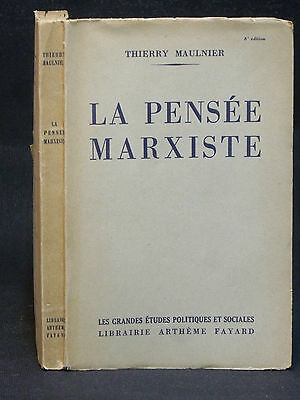 Thierry Maulnier pense par conséquent que « la France n’est pas le pays de la mesure : mais elle est, géographiquement, historiquement, socialement, moralement, intellectuellement, le pays de la conciliation des contraires (p. 59) ». Malgré la Débâcle de 1940, le pays vaincu conserve des atouts. Ceux-ci reposent sur sa géographie. L’auteur se lance dans une succincte et pertinente analyse géopolitique qui bouscule la fameuse et sempiternelle dualité Terre – Mer. La « complexité de notre civilisation nous est imposée par notre sol lui-même. Solidement établie au cœur de l’Europe, la France regarde en même temps vers toutes mers, et la géographie l’attache en même temps aux peuples continentaux et aux peuples maritimes qui se disputent en ce moment la prééminence. L’Allemagne n’est qu’européenne (6), l’Angleterre n’est qu’impériale (7) : la France est européenne et impériale en même temps. On en a vu les conséquences dans l’histoire militaire : celle de l’Allemagne n’est guère que terrestre, celle de l’Angleterre n’est guère que marine. Tout au long de son histoire, la France a dû se battre sur terre et sur mer en même temps (pp. 60 – 61) ». Encore de nos jours, l’Hexagone républicain se voit tiraillé entre un projet pseudo-européen germanocentré sous la houlette étatsunienne, une francophonie « grand remplaciste » métisseuse mondialisée et un monde atlantique anglo-saxon auquel il se rattache indirectement par la Normandie et la rémanence territoriale de la Grande Louisiane et de la Nouvelle-France des XVIIe et XVIIIe siècles… Terre de contrastes majeurs parce que « continentale et maritime, agricole et urbaine, européenne et impériale, nationaliste et humaniste, unitaire et régionaliste, religieux et rationaliste (8), particulariste et cosmopolite, pacifique et guerrière, la France concentre en elle toutes les contradictions de l’univers et a fait sa civilisation et sa vie, passablement heureuse et glorieuse au cours des siècles, de ces mêmes contradictions (p. 65) ».
Thierry Maulnier pense par conséquent que « la France n’est pas le pays de la mesure : mais elle est, géographiquement, historiquement, socialement, moralement, intellectuellement, le pays de la conciliation des contraires (p. 59) ». Malgré la Débâcle de 1940, le pays vaincu conserve des atouts. Ceux-ci reposent sur sa géographie. L’auteur se lance dans une succincte et pertinente analyse géopolitique qui bouscule la fameuse et sempiternelle dualité Terre – Mer. La « complexité de notre civilisation nous est imposée par notre sol lui-même. Solidement établie au cœur de l’Europe, la France regarde en même temps vers toutes mers, et la géographie l’attache en même temps aux peuples continentaux et aux peuples maritimes qui se disputent en ce moment la prééminence. L’Allemagne n’est qu’européenne (6), l’Angleterre n’est qu’impériale (7) : la France est européenne et impériale en même temps. On en a vu les conséquences dans l’histoire militaire : celle de l’Allemagne n’est guère que terrestre, celle de l’Angleterre n’est guère que marine. Tout au long de son histoire, la France a dû se battre sur terre et sur mer en même temps (pp. 60 – 61) ». Encore de nos jours, l’Hexagone républicain se voit tiraillé entre un projet pseudo-européen germanocentré sous la houlette étatsunienne, une francophonie « grand remplaciste » métisseuse mondialisée et un monde atlantique anglo-saxon auquel il se rattache indirectement par la Normandie et la rémanence territoriale de la Grande Louisiane et de la Nouvelle-France des XVIIe et XVIIIe siècles… Terre de contrastes majeurs parce que « continentale et maritime, agricole et urbaine, européenne et impériale, nationaliste et humaniste, unitaire et régionaliste, religieux et rationaliste (8), particulariste et cosmopolite, pacifique et guerrière, la France concentre en elle toutes les contradictions de l’univers et a fait sa civilisation et sa vie, passablement heureuse et glorieuse au cours des siècles, de ces mêmes contradictions (p. 65) ».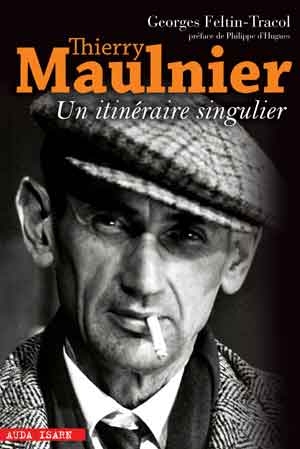 Espérant que « la structure économique de la France de demain sera corporative (p. 119) », Thierry Maulnier se plaît à souligner au nom d’une future et éventuelle convergence des révolutionnaires nationaux de « droite » et des révolutionnaires sociaux de « gauche » que « l’opposition légitimiste approuva les révoltes ouvrières contre la monarchie bourgeoise et libérale de Louis-Philippe (p. 121) ». Parce que « la Révolution Nationale n’est pas le régime de la facilité : elle demande et doit demander à chacun la patience dans l’effort et le sacrifice (p. 139) », son rôle « est précisément d’arracher le travail à cette dégradation qu’il subit dans l’exploitation capitaliste et dans les réactions qu’elle provoque (p. 137) » en s’appuyant sur un corporatisme renaissant à expérimenter. Il est clair qu’« anticapitaliste, [la Révolution Nationale] ne se confond ni avec la réaction patriarcale ni avec la révolution prolétarienne. […] Elle est la révolution d’une société qui ne se renie pas pas, mais obéit à sa loi interne d’un présent qui ne transforme le passé que pour l’accomplir (pp. 124 – 125) ». N’est-ce pas la définition exacte d’une révolution conservatrice ?
Espérant que « la structure économique de la France de demain sera corporative (p. 119) », Thierry Maulnier se plaît à souligner au nom d’une future et éventuelle convergence des révolutionnaires nationaux de « droite » et des révolutionnaires sociaux de « gauche » que « l’opposition légitimiste approuva les révoltes ouvrières contre la monarchie bourgeoise et libérale de Louis-Philippe (p. 121) ». Parce que « la Révolution Nationale n’est pas le régime de la facilité : elle demande et doit demander à chacun la patience dans l’effort et le sacrifice (p. 139) », son rôle « est précisément d’arracher le travail à cette dégradation qu’il subit dans l’exploitation capitaliste et dans les réactions qu’elle provoque (p. 137) » en s’appuyant sur un corporatisme renaissant à expérimenter. Il est clair qu’« anticapitaliste, [la Révolution Nationale] ne se confond ni avec la réaction patriarcale ni avec la révolution prolétarienne. […] Elle est la révolution d’une société qui ne se renie pas pas, mais obéit à sa loi interne d’un présent qui ne transforme le passé que pour l’accomplir (pp. 124 – 125) ». N’est-ce pas la définition exacte d’une révolution conservatrice ?
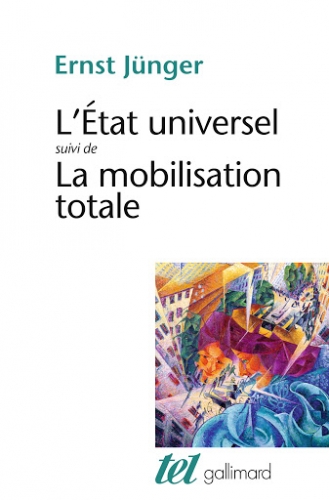 Ce fut l’idoine occasion de relire l’essai d’Ernst Jünger, qui, paru en 1930, porte précisément le nom de La mobilisation totale (Éditions Gallimard, coll. Tel, 1990), et d’en proposer quelques extraits choisis et commentés afin d’éclairer, par le recul qui tient à la distance temporelle, c’est-à-dire de manière inactuelle, la déconcertante actualité que nous vécûmes et continuons à vivre.
Ce fut l’idoine occasion de relire l’essai d’Ernst Jünger, qui, paru en 1930, porte précisément le nom de La mobilisation totale (Éditions Gallimard, coll. Tel, 1990), et d’en proposer quelques extraits choisis et commentés afin d’éclairer, par le recul qui tient à la distance temporelle, c’est-à-dire de manière inactuelle, la déconcertante actualité que nous vécûmes et continuons à vivre. 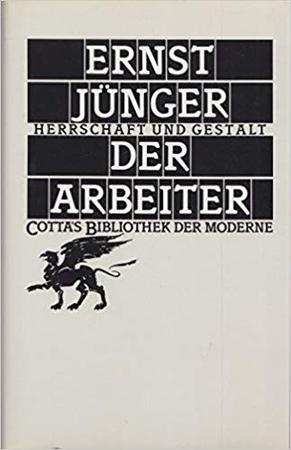 N’anticipons guère, car les critères de démarcation apparaîtront bien assez tôt, mais notons ceci afin d’établir un pont avec l’actualité : comprendre l’événement, pour Jünger, ne consiste pas à répéter mécaniquement, machinalement si l’on peut dire, les analyses précédentes et les schémas explicatifs préétablis; cela consiste, tout au contraire, à cerner sa spécificité, et à poser sur lui les justes mots afin de le faire advenir en tant que tel à la conscience collective. Telle fut très certainement la première faute, de nature épistémologique mais aux conséquences politiques, du Président Emmanuel Macron et de son équipe gouvernementale qui n’eurent de cesse de parler d’un virus comme d’un ennemi et d’une épidémie comme d’une guerre, des choix lexicaux et sémantiques pour le moins malheureux qui sont à mon sens en partie responsables de comportements a priori irrationnels comme la razzia des commerces (attention, indispensable précision, par ces propos, je n’excuse ni ne cautionne en aucune manière ces agissements dignes de pourceaux dépourvus de toute faculté de juger).
N’anticipons guère, car les critères de démarcation apparaîtront bien assez tôt, mais notons ceci afin d’établir un pont avec l’actualité : comprendre l’événement, pour Jünger, ne consiste pas à répéter mécaniquement, machinalement si l’on peut dire, les analyses précédentes et les schémas explicatifs préétablis; cela consiste, tout au contraire, à cerner sa spécificité, et à poser sur lui les justes mots afin de le faire advenir en tant que tel à la conscience collective. Telle fut très certainement la première faute, de nature épistémologique mais aux conséquences politiques, du Président Emmanuel Macron et de son équipe gouvernementale qui n’eurent de cesse de parler d’un virus comme d’un ennemi et d’une épidémie comme d’une guerre, des choix lexicaux et sémantiques pour le moins malheureux qui sont à mon sens en partie responsables de comportements a priori irrationnels comme la razzia des commerces (attention, indispensable précision, par ces propos, je n’excuse ni ne cautionne en aucune manière ces agissements dignes de pourceaux dépourvus de toute faculté de juger).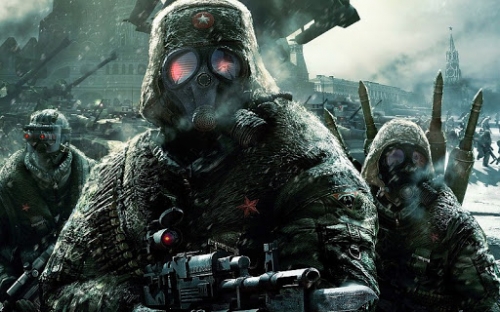
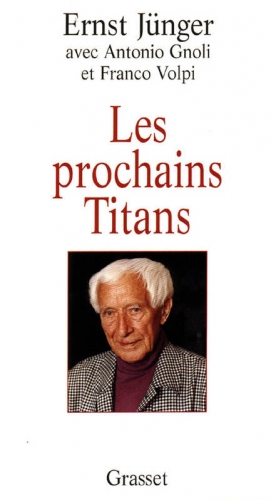 Le Réseau est une chose, notre appétence et notre célérité à nous y soumettre une autre. Jünger, qui aura sur ce point très largement anticipé et influencé les développements de Heidegger dans La question de la technique, conférence dans laquelle ce dernier affirme notamment que «l’essence de la technique n’est pas la technique», met en évidence qu’aucun dispositif technique ne parvient à s’encastrer dans le tissu social, c’est-à-dire à devenir un système sociotechnique, s’il n’est précédé d’une révolution anthropologique qui, dans les mentalités et les structures de la croyance collective, légitime l’usage dudit dispositif. Pourquoi donc le confinement, présenté comme un acte de mobilisation, et désormais les règles du déconfinement, qui ne sont autres que la poursuite de la mobilisation sous une forme nouvelle, se trouvent-t-ils aussi largement respectés ? Il est vrai que la peur de la maladie et la crainte de l’amende y sont pour quelque chose, je ne le nie pas; mais c’est au fond le principe directeur de notre société qui oriente nos actions, pour les uns, qui se limitent à respecter les consignes, de façon minimaliste, pour les autres, qui n’hésitent guère à prendre directement part au combat en cousant des masques et en imprimant des visières (masques et visières, dont la pénurie annonce la future fortune de proches du pouvoir, c’est une évidence qui ne requiert aucune boule de cristal), de manière engagée voire fanatique.
Le Réseau est une chose, notre appétence et notre célérité à nous y soumettre une autre. Jünger, qui aura sur ce point très largement anticipé et influencé les développements de Heidegger dans La question de la technique, conférence dans laquelle ce dernier affirme notamment que «l’essence de la technique n’est pas la technique», met en évidence qu’aucun dispositif technique ne parvient à s’encastrer dans le tissu social, c’est-à-dire à devenir un système sociotechnique, s’il n’est précédé d’une révolution anthropologique qui, dans les mentalités et les structures de la croyance collective, légitime l’usage dudit dispositif. Pourquoi donc le confinement, présenté comme un acte de mobilisation, et désormais les règles du déconfinement, qui ne sont autres que la poursuite de la mobilisation sous une forme nouvelle, se trouvent-t-ils aussi largement respectés ? Il est vrai que la peur de la maladie et la crainte de l’amende y sont pour quelque chose, je ne le nie pas; mais c’est au fond le principe directeur de notre société qui oriente nos actions, pour les uns, qui se limitent à respecter les consignes, de façon minimaliste, pour les autres, qui n’hésitent guère à prendre directement part au combat en cousant des masques et en imprimant des visières (masques et visières, dont la pénurie annonce la future fortune de proches du pouvoir, c’est une évidence qui ne requiert aucune boule de cristal), de manière engagée voire fanatique. Il n’est guère étonnant que Jünger tienne ses propos, lui qui assiste à l’émergence des relations publiques dont le chef d’œuvre inaugural demeure l’incroyable Propaganda d’Edward Bernays. Quant à nous, c’est la télévision et ses experts, ce sont les journaux et leurs éditorialistes, ce sont toutes ces associations subventionnées et leurs porte-paroles illuminés, qui anesthésient toute liberté d’esprit afin d’imposer la disponibilité en principe de vie. Peut-être l’opposition que Jünger dresse entre civilisation et culture suggère-t-elle d’ailleurs une issue qu’il faudrait prendre à la lettre, au mot : la campagne ne serait-elle pas la clef des champs, elle qui demeure encore un peu, malgré tout, allergique au baratin du nouveau monde ?
Il n’est guère étonnant que Jünger tienne ses propos, lui qui assiste à l’émergence des relations publiques dont le chef d’œuvre inaugural demeure l’incroyable Propaganda d’Edward Bernays. Quant à nous, c’est la télévision et ses experts, ce sont les journaux et leurs éditorialistes, ce sont toutes ces associations subventionnées et leurs porte-paroles illuminés, qui anesthésient toute liberté d’esprit afin d’imposer la disponibilité en principe de vie. Peut-être l’opposition que Jünger dresse entre civilisation et culture suggère-t-elle d’ailleurs une issue qu’il faudrait prendre à la lettre, au mot : la campagne ne serait-elle pas la clef des champs, elle qui demeure encore un peu, malgré tout, allergique au baratin du nouveau monde ?  Le président Emmanuel Macron le sait bien, et si vraiment il l’ignore, une quelconque huile l’aura bien averti : la colère gronde, dont l’intensité n’a d’égale que son niveau d’incompétence et d’incurie – sans compter l’irritation née de ces invraisemblables et insignifiantes envolées technico-lyriques («un été apprenant et culturel» ! : «mdr» aurait-t-on envie de rétorquer) qui circulent en boucle sur les réseaux sociaux. L’épuisement de l’opposition, non pas celle qui se met douillettement en scène à l’Assemblée Nationale en attendant que le fatum de l’alternance produise son effet, mais celle qui s’empare des ronds-points de l’Hexagone et refuse de se laisser institutionnaliser par le jeu de la représentation, l’épuisement de cette opposition-là, qui se trouve aujourd’hui mobilisée en première ligne dans les hôpitaux, les commerces et les ateliers, représente très certainement le gage d’une certaine tranquillité intérieure, c’est-à-dire de sa possible réélection, à condition, par conséquent, de maintenir l’état d’exception jusqu’à ce qu’il soit accepté comme normal et que le régime autoritaire, dictatorial, s’installe dans notre quotidien avec le statut de l’évidence. Le tout assorti de concessions qui ne le sont point : remaniement ministériel, retour de la souveraineté, tournant écologique, visions du monde d’après qui ne sera plus jamais le même, etc.
Le président Emmanuel Macron le sait bien, et si vraiment il l’ignore, une quelconque huile l’aura bien averti : la colère gronde, dont l’intensité n’a d’égale que son niveau d’incompétence et d’incurie – sans compter l’irritation née de ces invraisemblables et insignifiantes envolées technico-lyriques («un été apprenant et culturel» ! : «mdr» aurait-t-on envie de rétorquer) qui circulent en boucle sur les réseaux sociaux. L’épuisement de l’opposition, non pas celle qui se met douillettement en scène à l’Assemblée Nationale en attendant que le fatum de l’alternance produise son effet, mais celle qui s’empare des ronds-points de l’Hexagone et refuse de se laisser institutionnaliser par le jeu de la représentation, l’épuisement de cette opposition-là, qui se trouve aujourd’hui mobilisée en première ligne dans les hôpitaux, les commerces et les ateliers, représente très certainement le gage d’une certaine tranquillité intérieure, c’est-à-dire de sa possible réélection, à condition, par conséquent, de maintenir l’état d’exception jusqu’à ce qu’il soit accepté comme normal et que le régime autoritaire, dictatorial, s’installe dans notre quotidien avec le statut de l’évidence. Le tout assorti de concessions qui ne le sont point : remaniement ministériel, retour de la souveraineté, tournant écologique, visions du monde d’après qui ne sera plus jamais le même, etc. Le progrès a pour nous un statut d’évidence; non plus le progrès moral (celui qui croit au perfectionnement de l’individu raisonnable par l’éducation), non plus le progrès historico-politique (celui qui imagine la construction d’un avenir radieux par des citoyens rationnels épousant le sens de l’Histoire), mais, bien sûr, le progrès technique qui, sûr de son statut d’idole et de son implacable force, lance ses rouleaux-compresseurs mécaniques, automatiques, numériques, à l’assaut des vieilleries de la civilisation, écrase les traditions, casse les institutions et concasse les corps intermédiaires, broye le langage pour lui substituer le grincement assourdissant des rouages et le bruit diffus de l’information. Non, ce n’est pas un monde que détruit le progrès; non ce n’est pas seulement une ère qui prend fin sous les coups de butoir de la méga-machine; non, Messieurs les relativistes, notre époque ne saurait se diluer dans une histoire générale du mal et de ses manifestations. Jamais les assemblages anthropologiques qui garantissent la pérennité de l’espèce humaine ont-ils été aussi durement mis à l’épreuve; jamais une société («société» qui s’est, soit dit en passant, dilué dans le «social», dilution ou dissolution qui mériterait à elle seule un article entier) n’a-t-elle adopté, pour seul mode de reproduction, la fabrique d’êtres opérationnels. Telle est bien, au fond, l’énigme que nous laissons à nos survivants ou, hypothèse osée mais stimulante, à une civilisation extra-terrestre qui découvrirait les décombres de la nôtre. Si l’espèce humaine, je veux dire : réellement humaine, venait à survivre à cette catastrophe, alors nos descendants s’interrogeront, avant peut-être de baisser les bras devant l’insondable mystère du progrès : mais de quelle folie ont-ils été pris, nos ancêtres de la société industrielle, pour précipiter la civilisation dans l’apocalypse ?
Le progrès a pour nous un statut d’évidence; non plus le progrès moral (celui qui croit au perfectionnement de l’individu raisonnable par l’éducation), non plus le progrès historico-politique (celui qui imagine la construction d’un avenir radieux par des citoyens rationnels épousant le sens de l’Histoire), mais, bien sûr, le progrès technique qui, sûr de son statut d’idole et de son implacable force, lance ses rouleaux-compresseurs mécaniques, automatiques, numériques, à l’assaut des vieilleries de la civilisation, écrase les traditions, casse les institutions et concasse les corps intermédiaires, broye le langage pour lui substituer le grincement assourdissant des rouages et le bruit diffus de l’information. Non, ce n’est pas un monde que détruit le progrès; non ce n’est pas seulement une ère qui prend fin sous les coups de butoir de la méga-machine; non, Messieurs les relativistes, notre époque ne saurait se diluer dans une histoire générale du mal et de ses manifestations. Jamais les assemblages anthropologiques qui garantissent la pérennité de l’espèce humaine ont-ils été aussi durement mis à l’épreuve; jamais une société («société» qui s’est, soit dit en passant, dilué dans le «social», dilution ou dissolution qui mériterait à elle seule un article entier) n’a-t-elle adopté, pour seul mode de reproduction, la fabrique d’êtres opérationnels. Telle est bien, au fond, l’énigme que nous laissons à nos survivants ou, hypothèse osée mais stimulante, à une civilisation extra-terrestre qui découvrirait les décombres de la nôtre. Si l’espèce humaine, je veux dire : réellement humaine, venait à survivre à cette catastrophe, alors nos descendants s’interrogeront, avant peut-être de baisser les bras devant l’insondable mystère du progrès : mais de quelle folie ont-ils été pris, nos ancêtres de la société industrielle, pour précipiter la civilisation dans l’apocalypse ? 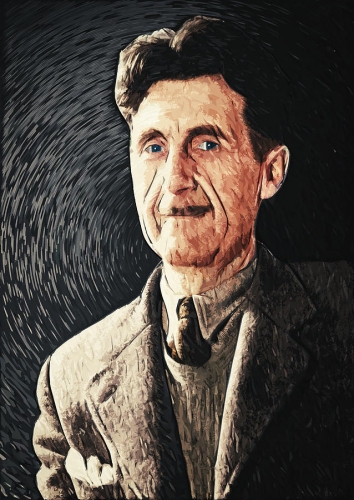
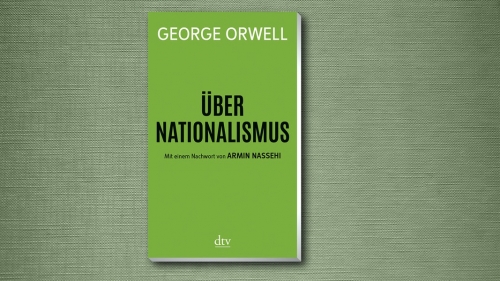
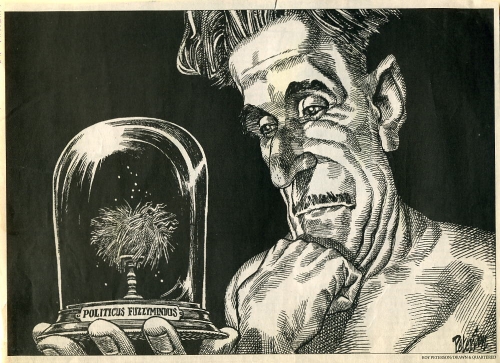
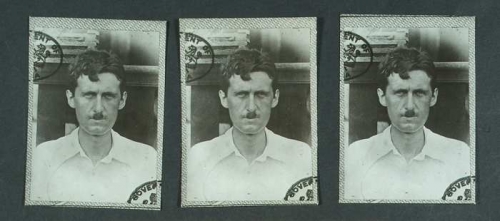
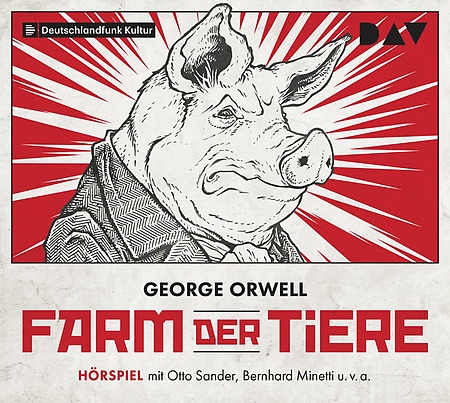
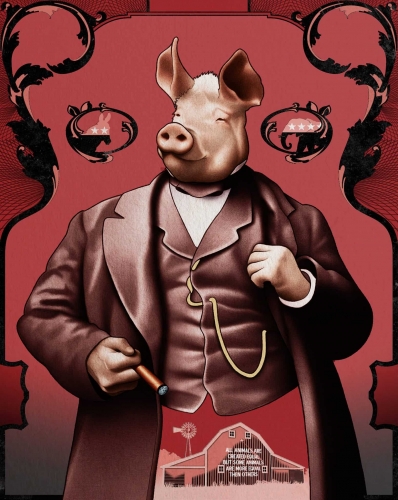
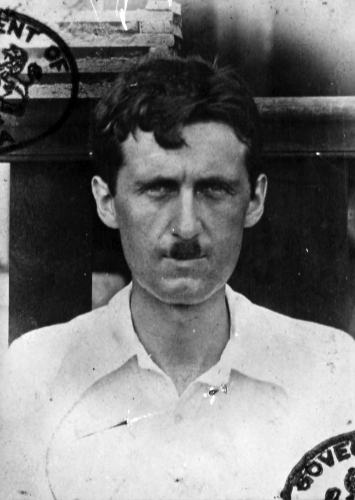
 But amid all their countless fiascoes and failures in every other field (including the highest per capita death rate from COVID-19 in Europe, and one of the highest in the world) the British remain world leaders at managing global Fake News. As long as the tone remains restrained and dignified, literally any slander will be swallowed by the credulous and every foul scandal and shame can be confidently covered up.
But amid all their countless fiascoes and failures in every other field (including the highest per capita death rate from COVID-19 in Europe, and one of the highest in the world) the British remain world leaders at managing global Fake News. As long as the tone remains restrained and dignified, literally any slander will be swallowed by the credulous and every foul scandal and shame can be confidently covered up.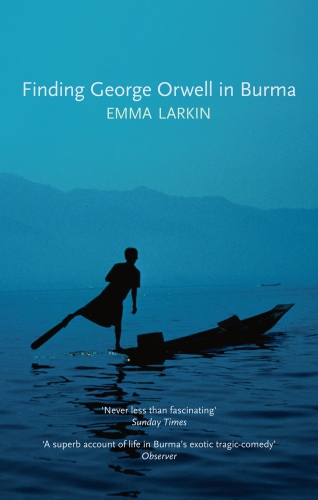 The first important breakthrough in this fundamental reassessment of Orwell comes from one of the best books on him. “Finding George Orwell in Burma” was published in 2005 and written by “Emma Larkin”, a pseudonym for an outstanding American journalist in Asia whose identity I have long suspected to be an old friend and deeply respected colleague, and whose continued anonymity I respect.
The first important breakthrough in this fundamental reassessment of Orwell comes from one of the best books on him. “Finding George Orwell in Burma” was published in 2005 and written by “Emma Larkin”, a pseudonym for an outstanding American journalist in Asia whose identity I have long suspected to be an old friend and deeply respected colleague, and whose continued anonymity I respect.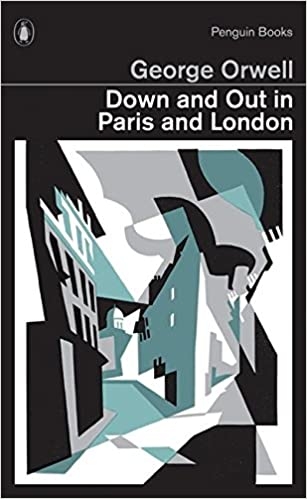 The young Eric Blair was so disgusted by the experience that when he returned home he abandoned the respectable middle class life style he had always enjoyed and became, not just an idealistic socialist as many in those days did, but a penniless, starving tramp. He even abandoned his name and very identity. He suffered a radical personality collapse: He killed Eric Blair. He became George Orwell.
The young Eric Blair was so disgusted by the experience that when he returned home he abandoned the respectable middle class life style he had always enjoyed and became, not just an idealistic socialist as many in those days did, but a penniless, starving tramp. He even abandoned his name and very identity. He suffered a radical personality collapse: He killed Eric Blair. He became George Orwell.
 Vous aurez peut-être remarqué que tous les idiots de France et de Navarre, et Dieu sait comme ils sont nombreux, nous répètent en boucle que, demain, rien ne sera plus jamais comme avant, alors bien évidemment que, demain, ce sera encore pire qu’hier : plus de pollution, plus de consommation, plus de saccage, puisqu’il faudra en somme reprendre, en mettant les bouchées doubles, là où cette regrettable pandémie nous a stoppés net. Au rebours de ces pseudo-analyses, c’est la société occidentale techno-marchande dans son ensemble qui depuis bien des lustres est passée en mode de confinement, et même qu’elle est résolument, de plus en plus implacablement confinée. Pour le dire sur les brisées de Carl Schmitt commenté par Giorgio Agamben, l’état d’exception est devenu la norme : flicage à tous les niveaux, dans les rues et sur les autoroutes virtuelles, prépondérance des discours des « sachants » au détriment des « apprenants » voire des ignorants que nous sommes tous plus ou moins devenus, démonstration quotidienne bien que décomplexée et même parfaitement méprisante de l’incompétence criminelle de nos gouvernements et relais étatiques, individus infantilisés par l’obligation de respecter protocoles sanitaires et gestes barrières, dématérialisation accentuée, triomphe de la novlangue managériale étendue à toutes les sphères de la société et, d’abord, au monde de la santé au sens le plus large, pandémie de la non-parole journalistique s’alimentant de ses propres discours bien davantage que de la réalité, etc..
Vous aurez peut-être remarqué que tous les idiots de France et de Navarre, et Dieu sait comme ils sont nombreux, nous répètent en boucle que, demain, rien ne sera plus jamais comme avant, alors bien évidemment que, demain, ce sera encore pire qu’hier : plus de pollution, plus de consommation, plus de saccage, puisqu’il faudra en somme reprendre, en mettant les bouchées doubles, là où cette regrettable pandémie nous a stoppés net. Au rebours de ces pseudo-analyses, c’est la société occidentale techno-marchande dans son ensemble qui depuis bien des lustres est passée en mode de confinement, et même qu’elle est résolument, de plus en plus implacablement confinée. Pour le dire sur les brisées de Carl Schmitt commenté par Giorgio Agamben, l’état d’exception est devenu la norme : flicage à tous les niveaux, dans les rues et sur les autoroutes virtuelles, prépondérance des discours des « sachants » au détriment des « apprenants » voire des ignorants que nous sommes tous plus ou moins devenus, démonstration quotidienne bien que décomplexée et même parfaitement méprisante de l’incompétence criminelle de nos gouvernements et relais étatiques, individus infantilisés par l’obligation de respecter protocoles sanitaires et gestes barrières, dématérialisation accentuée, triomphe de la novlangue managériale étendue à toutes les sphères de la société et, d’abord, au monde de la santé au sens le plus large, pandémie de la non-parole journalistique s’alimentant de ses propres discours bien davantage que de la réalité, etc..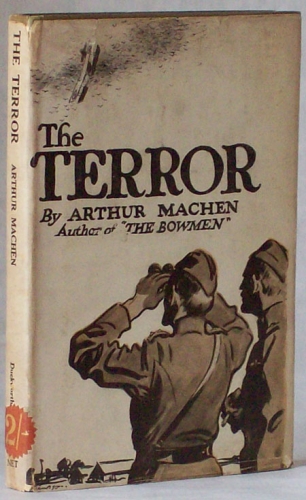 Non, la période dite de confinement n’a rien de vraiment très original, avouons-le même si, comme je l’ai dit, elle a pu faire figure, aussi étrange que fragile, d’un courte, trop courte parenthèse ayant ralenti l’avancée inexorable de la Machine, et permettre à la nature, durant un battement de sa paupière en plexiglass, de se rappeler à notre bon souvenir, sans l’aspect tragique et vengeur qu’illustre Arthur Machen dans une remarquable nouvelle intitulée La Terreur.
Non, la période dite de confinement n’a rien de vraiment très original, avouons-le même si, comme je l’ai dit, elle a pu faire figure, aussi étrange que fragile, d’un courte, trop courte parenthèse ayant ralenti l’avancée inexorable de la Machine, et permettre à la nature, durant un battement de sa paupière en plexiglass, de se rappeler à notre bon souvenir, sans l’aspect tragique et vengeur qu’illustre Arthur Machen dans une remarquable nouvelle intitulée La Terreur.
 Roberto Bolaño n’a eu de cesse de s’interroger sur cette question aussi fameuse que délicate, répondant de multiples façons dans presque chacune de ses œuvres, jusqu’à l’œuvre au noir que fut 2666. Résumons l’ensemble de ces réponses apportées par le biais d’ingénieuses figurations littéraires du Mal en affirmant que, pour le grand écrivain chilien comme pour d’autres romanciers, la plus grande œuvre d’art jamais ne saurait se bâtir sur des pleurs et des grincements de dents, encore moins sur du sang.
Roberto Bolaño n’a eu de cesse de s’interroger sur cette question aussi fameuse que délicate, répondant de multiples façons dans presque chacune de ses œuvres, jusqu’à l’œuvre au noir que fut 2666. Résumons l’ensemble de ces réponses apportées par le biais d’ingénieuses figurations littéraires du Mal en affirmant que, pour le grand écrivain chilien comme pour d’autres romanciers, la plus grande œuvre d’art jamais ne saurait se bâtir sur des pleurs et des grincements de dents, encore moins sur du sang.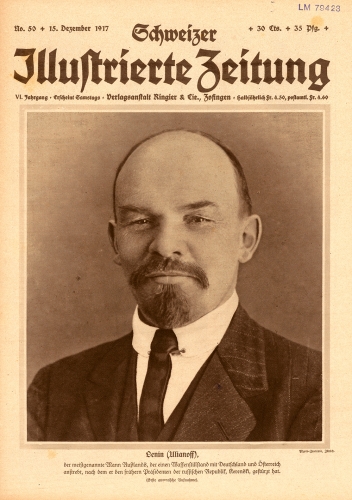
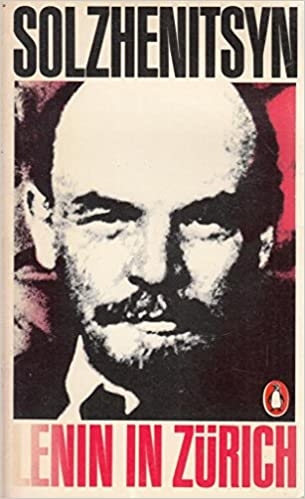 In 1975, Aleksandr Solzhenitsyn excised the several Lenin chapters from his massive and unfinished Red Wheel epic and compiled them into one volume entitled Lenin in Zürich. At the time, only one of these chapters had been published — in Knot I of the Red Wheel, known as August 1914 — while the remaining chapters would still have to languish in the author’s desk drawer for decades before appearing as part of The Red Wheel proper (November 1916 and March 1917, specifically). In order to save time and make an impression on his contemporaries, many of whom in the West still harbored misplaced sympathies for Lenin, Solzhenitsyn decided to share with the world his eye-opening and unforgettable treatment of the Soviet Revolutionary.
In 1975, Aleksandr Solzhenitsyn excised the several Lenin chapters from his massive and unfinished Red Wheel epic and compiled them into one volume entitled Lenin in Zürich. At the time, only one of these chapters had been published — in Knot I of the Red Wheel, known as August 1914 — while the remaining chapters would still have to languish in the author’s desk drawer for decades before appearing as part of The Red Wheel proper (November 1916 and March 1917, specifically). In order to save time and make an impression on his contemporaries, many of whom in the West still harbored misplaced sympathies for Lenin, Solzhenitsyn decided to share with the world his eye-opening and unforgettable treatment of the Soviet Revolutionary.
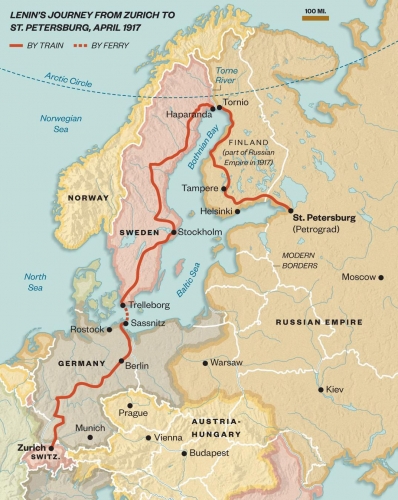
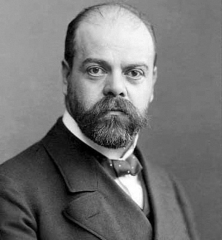 A man known as Parvus appears foremost among the Jews in Lenin in Zürich. Born Izrail Lazarevich Gelfand, he comes across, at least to Lenin, as an enigmatic and somewhat unscrupulous capitalist and millionaire who, for some reason, dedicates his life to socialist causes. Either this, or he wishes to destroy Russia while exhibiting a suspicious allegiance to Germany. Parvus, along with his protégé Leon Trotsky, had tried and failed to overthrow the Tsar in 1905, and now offers a new plan: With his deep contacts in the German government, he will arrange for the Bolsheviks’ to travel through Germany in order to re-enter Russia where they can foment revolution against a weakened Tsar. This would serve not only Lenin but Parvus’ German friends as well by knocking Russia out of the war. Suspicious of Parvus’ outsider status, and especially of his tolerance of Lenin’s detested Mensheviks, Lenin at first refuses. However, he cannot shake his respect and fascination for this mysterious benefactor.
A man known as Parvus appears foremost among the Jews in Lenin in Zürich. Born Izrail Lazarevich Gelfand, he comes across, at least to Lenin, as an enigmatic and somewhat unscrupulous capitalist and millionaire who, for some reason, dedicates his life to socialist causes. Either this, or he wishes to destroy Russia while exhibiting a suspicious allegiance to Germany. Parvus, along with his protégé Leon Trotsky, had tried and failed to overthrow the Tsar in 1905, and now offers a new plan: With his deep contacts in the German government, he will arrange for the Bolsheviks’ to travel through Germany in order to re-enter Russia where they can foment revolution against a weakened Tsar. This would serve not only Lenin but Parvus’ German friends as well by knocking Russia out of the war. Suspicious of Parvus’ outsider status, and especially of his tolerance of Lenin’s detested Mensheviks, Lenin at first refuses. However, he cannot shake his respect and fascination for this mysterious benefactor.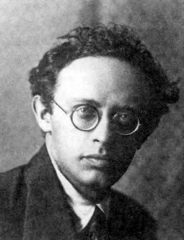 Another Jew who figures prominently in Lenin in Zürich is Radek (born Karl Berngardovich Sobelsohn). Lenin has tremendous respect for Radek as a writer and propagandist — that Radek had become one of the Soviet Union’s most prominent journalists years after Lenin’s death certainly justifies Lenin’s esteem. In all, he is clever and resourceful and the only person to whom Lenin would voluntarily surrender his pen. After the February Revolution in Russia, as Lenin prepares for travel back to his home country according to Parvus’ plan, Radek contrives ingenious solutions to formidable logistical problems that threaten to sink the enterprise. This makes Lenin, for one of the few times in the book, truly happy.
Another Jew who figures prominently in Lenin in Zürich is Radek (born Karl Berngardovich Sobelsohn). Lenin has tremendous respect for Radek as a writer and propagandist — that Radek had become one of the Soviet Union’s most prominent journalists years after Lenin’s death certainly justifies Lenin’s esteem. In all, he is clever and resourceful and the only person to whom Lenin would voluntarily surrender his pen. After the February Revolution in Russia, as Lenin prepares for travel back to his home country according to Parvus’ plan, Radek contrives ingenious solutions to formidable logistical problems that threaten to sink the enterprise. This makes Lenin, for one of the few times in the book, truly happy.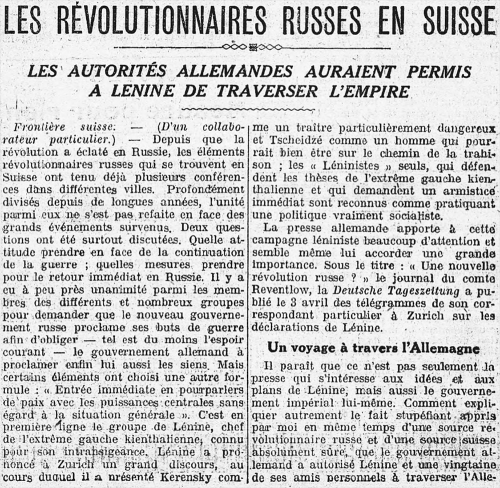


 Il est par comparaison aisé d'évoquer une victoire, toujours une occasion d'affirmer son moi et de se hisser sur le pavois. On ne peut à ce sujet qu'opposer une épopée au récit d'une défaite dans la mesure où son caractère grandiloquent va à l'encontre de tout désir de lucidité. L'épopée vise au grandissement, voire à une exagération tendant à la valorisation de tout un peuple. Mais il peut exister un autre type de narration, propre des vieilles civilisations ayant acquis une profonde expérience de l'âme humaine, qui donne toute la mesure de celle-ci quand elle est confrontée à l'épreuve. C'est une vieille idée, l'être qui reçoit un coup de bâton connaît un état affectif lui donnant subitement une plus grande conscience de lui-même.
Il est par comparaison aisé d'évoquer une victoire, toujours une occasion d'affirmer son moi et de se hisser sur le pavois. On ne peut à ce sujet qu'opposer une épopée au récit d'une défaite dans la mesure où son caractère grandiloquent va à l'encontre de tout désir de lucidité. L'épopée vise au grandissement, voire à une exagération tendant à la valorisation de tout un peuple. Mais il peut exister un autre type de narration, propre des vieilles civilisations ayant acquis une profonde expérience de l'âme humaine, qui donne toute la mesure de celle-ci quand elle est confrontée à l'épreuve. C'est une vieille idée, l'être qui reçoit un coup de bâton connaît un état affectif lui donnant subitement une plus grande conscience de lui-même. 

 L'égalité, si elle s'applique aux droits de chacun, se doit aussi de concerner leurs devoirs, ce qu'a oublié la Révolution française et qu'avait enseigné le christianisme. Or, ceux-ci diffèrent entre les personnes, comme l'évoque le mythe des pierres dont parle Saint-Exupéry. Toutes les pierres constituant la cathédrale ont une importance qui varie selon leur place dans l'édifice. Le libéralisme, qui veut disperser toutes les pierres, ne l'a pas compris ; encore moins le marxisme, lequel veut rassembler ces pierres pour en faire un tas informe où tous les éléments seront identiques et où l'individu sera écrasé par la masse. « Ce que je hais dans le marxisme, c'est le totalitarisme à quoi il conduit. L'homme y est défini comme producteur et consommateur, le problème essentiel étant celui de la distribution » [14] disait l'écrivain.
L'égalité, si elle s'applique aux droits de chacun, se doit aussi de concerner leurs devoirs, ce qu'a oublié la Révolution française et qu'avait enseigné le christianisme. Or, ceux-ci diffèrent entre les personnes, comme l'évoque le mythe des pierres dont parle Saint-Exupéry. Toutes les pierres constituant la cathédrale ont une importance qui varie selon leur place dans l'édifice. Le libéralisme, qui veut disperser toutes les pierres, ne l'a pas compris ; encore moins le marxisme, lequel veut rassembler ces pierres pour en faire un tas informe où tous les éléments seront identiques et où l'individu sera écrasé par la masse. « Ce que je hais dans le marxisme, c'est le totalitarisme à quoi il conduit. L'homme y est défini comme producteur et consommateur, le problème essentiel étant celui de la distribution » [14] disait l'écrivain. 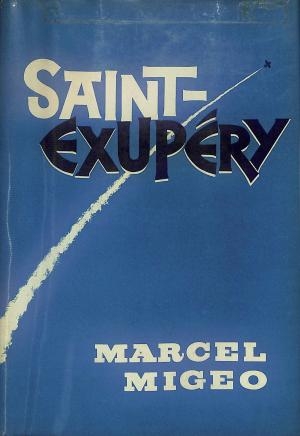 Marcel Migeo, Saint-Exupéry. Paris : Flammarion, 1958.
Marcel Migeo, Saint-Exupéry. Paris : Flammarion, 1958.